Are you interested in exploring historic homes? Here are the must-see historic houses in Brazil:
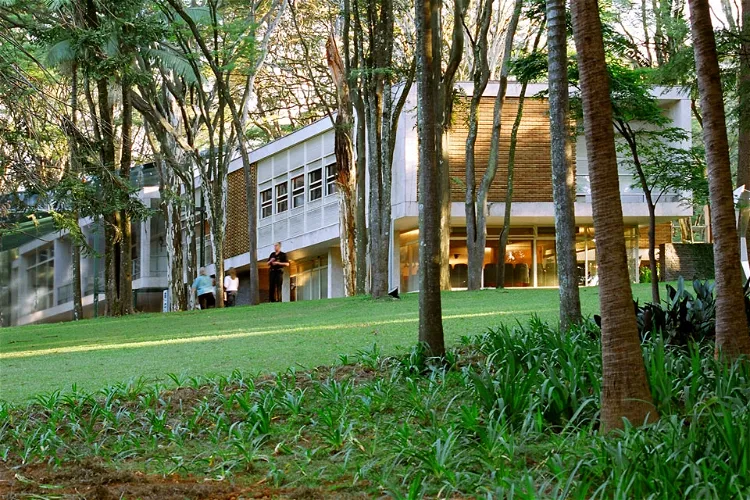
Maria Luisa and Oscar Americano Foundation
São PauloThe Maria Luisa and Oscar Americano Foundation is situated in the city of São Paulo, specifically at Morumbi 4077, right across from the Palácio dos Bandeirantes. This location was once the residence of a couple who donated it to the city as a place of leisure and culture. It is now a significant cultural and leisure space in the city.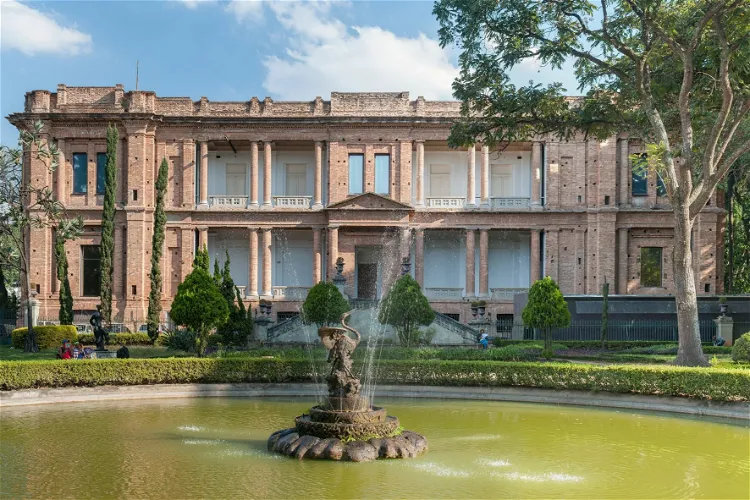
Pinacoteca of the State of Sao Paulo
São PauloIf you're a fan of art, you should consider visiting this interesting museum in a beautiful building in the city centre where you can find important works of art from Brasil as well as from all around the world. The museum is more than a hundred years old and you can admire here a variety of sculptu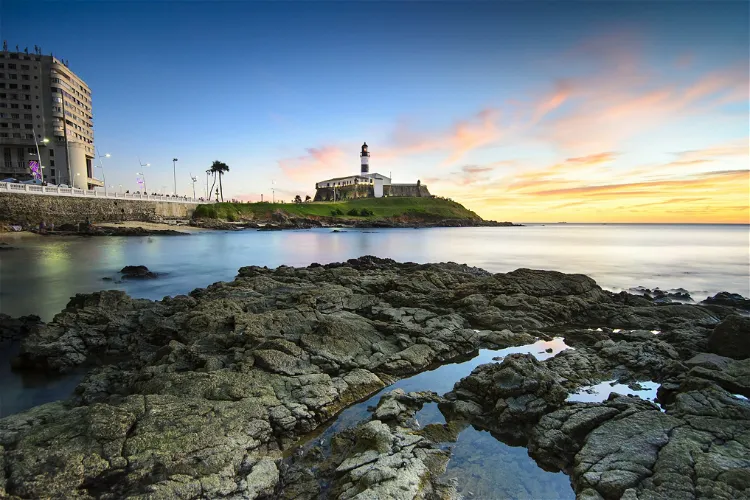
Barra Lighthouse
SalvadorThe Barra Lighthouse, also known as the Santo Antônio Lighthouse, is a significant landmark located in Salvador, Bahia, Brazil. It is situated at the entrance of the Bay of All Saints, offering a strategic viewpoint of the surrounding area. This location makes it a popular spot for tourists who are interested in exploring the historical and natural beauty of Salvador.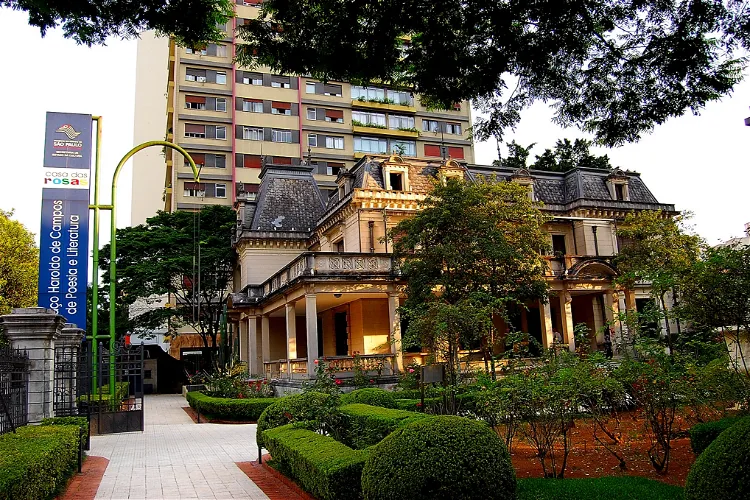
House of the Roses
São PauloLa Casa das Rosas, located at 37 Avenida Paulista in the city of São Paulo, is a significant cultural landmark. The building was designed by the Ramos de Azevedo studio and completed in 1935. It served as a residence until 1986, when it was expropriated by the São Paulo state government.
Royal Portuguese Reading Room
Rio de JaneiroThe Royal Portuguese Cabinet of Reading, a library and lusophone cultural institution, is situated at Luís de Camões Street, number 30, in the heart of Rio de Janeiro, Brazil. This location makes it easily accessible for tourists visiting the city center.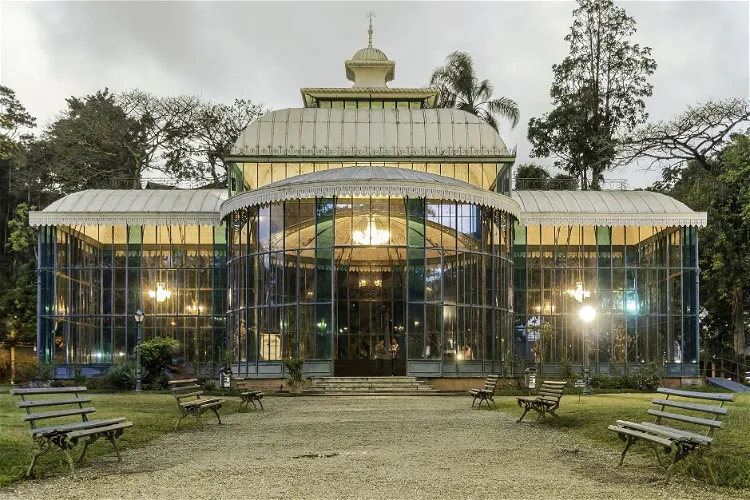
Palácio de Cristal
PetrópolisThe Crystal Palace, located in the city of Petrópolis in the state of Rio de Janeiro, is a historical site that was inaugurated in 1884. Originally, it was built to house agricultural exhibitions. However, today it serves as a venue for various exhibitions and events, making it a lively and interesting place for tourists to visit.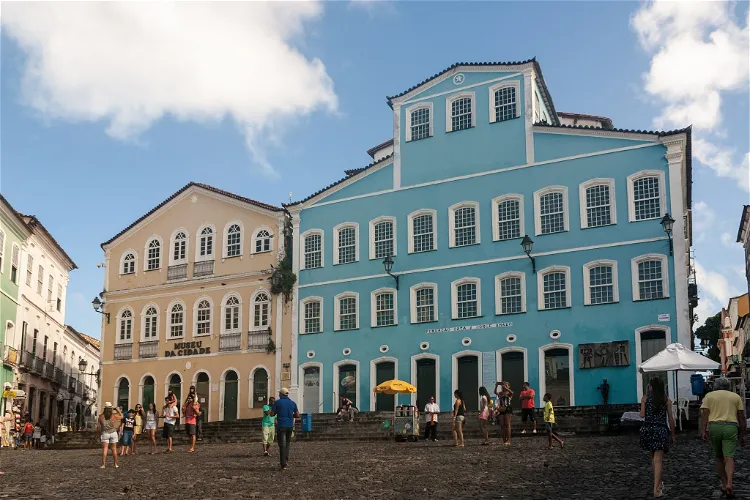
Jorge Amado House
SalvadorThe Jorge Amado House Foundation is a non-profit, non-governmental organization located in Salvador, Bahia, Brazil. It is a cultural institution that offers various activities and serves as a research center with documentation about Jorge Amado, Zélia Gattai, and Bahian literature. The foundation's mission is to preserve, research, and disseminate the bibliographic and artistic collections of Jorge Amado, as well as to encourage and support studies and research on the writer's life and on Bahian art and literature.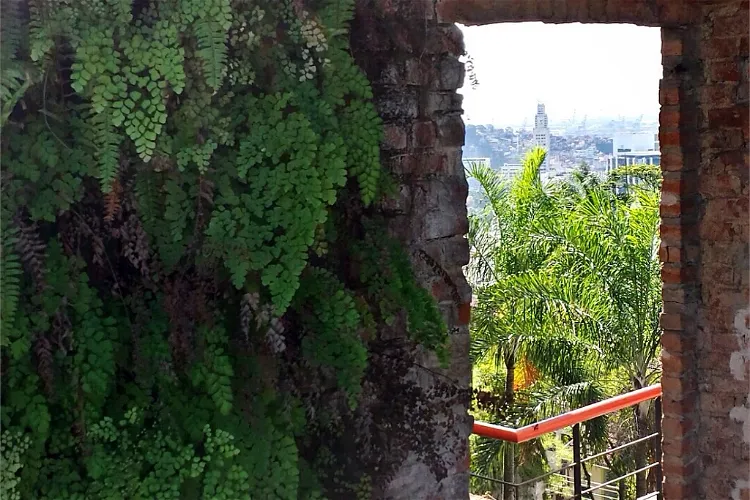
Ruins Park
Rio de JaneiroThe Municipal Cultural Center Parque Glória Maria, previously known as the Municipal Cultural Center Parque das Ruínas, is a public park and cultural center situated in the Santa Teresa neighborhood of Rio de Janeiro, Brazil. This location is steeped in history and offers a unique blend of cultural and natural attractions. It is located in the ruins of a building that was once the home of Laurinda Santos Lobo, a prominent socialite of the Belle Époque era in Rio.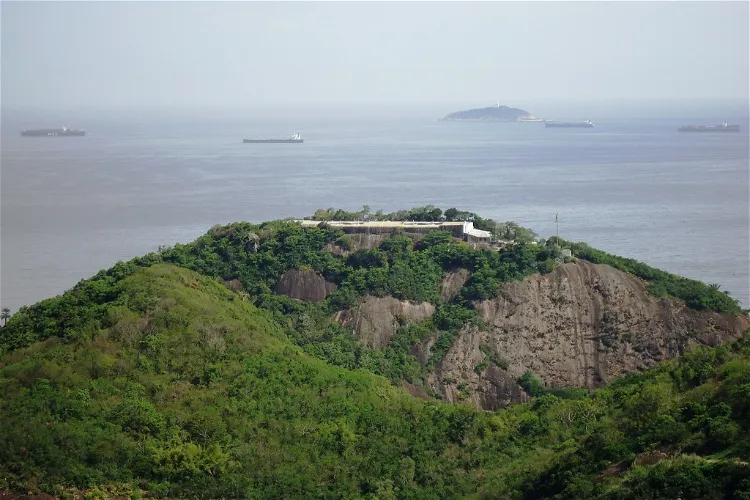
Duque de Caxias Fort
Rio de JaneiroThe Forte Duque de Caxias, which was previously known as Forte da Vigia, Forte da Espia, and Forte do Leme, is a historical site located in the Leme neighborhood in the city of Rio de Janeiro, Brazil. This fort has a rich history dating back to the 18th century and has undergone several name changes over the years. It is situated on the summit of Morro do Leme, offering panoramic views of the surrounding area.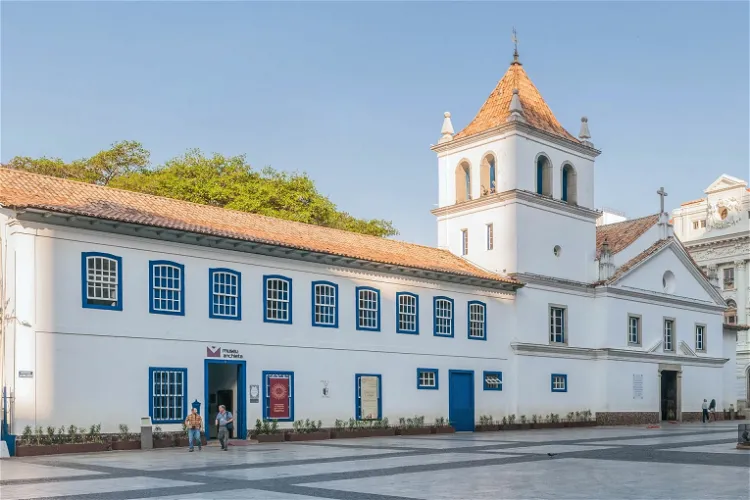
School Yard
São PauloPátio do Colégio, a historical Jesuit church and school, holds a significant place in the history of São Paulo, Brazil. It is the site where the city was founded back in 1554. The church and school have undergone various transformations over the centuries, reflecting the city's evolving history and culture.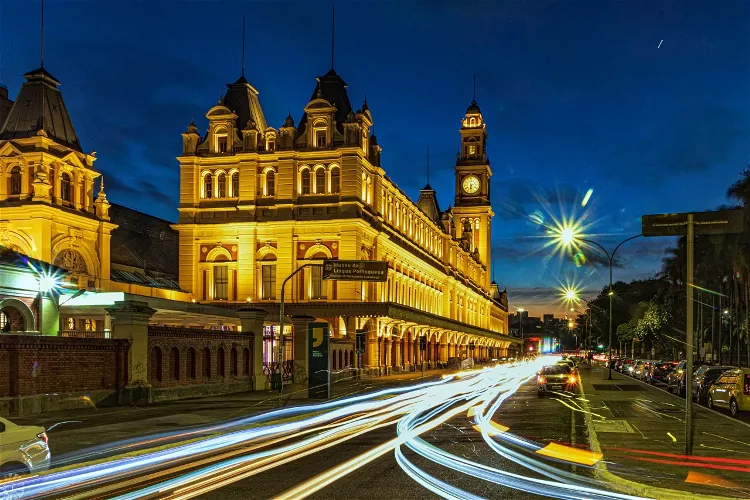
Museum of the Portuguese Language
São PauloThe Museum of the Portuguese Language, located in the historic Bairro da Luz train station in São Paulo, offers an interactive experience focused on the Portuguese language. This museum is a unique opportunity for visitors to explore the origins, history, and ongoing evolution of the Portuguese language, which is considered the foundation of Brazilian culture.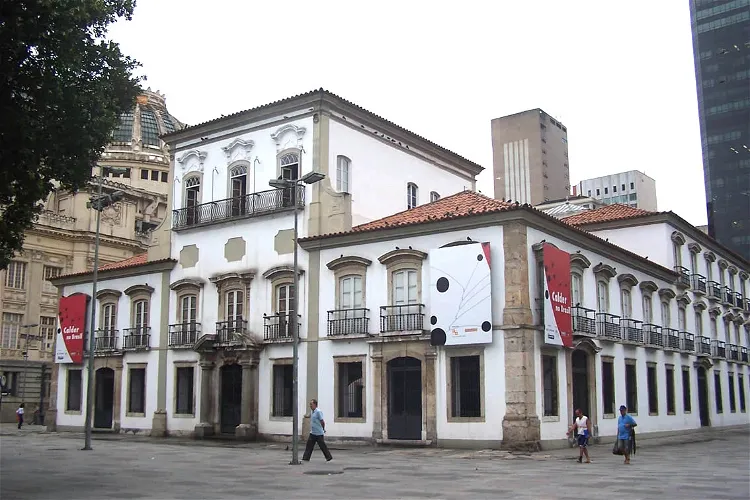
Imperial Palace
Rio de JaneiroThe Imperial Palace, also known as Paço Imperial, is a significant historical site located in the heart of Rio de Janeiro, Brazil. This Baroque colonial building stands as a testament to the city's rich history and architectural prowess. It was built in the 18th century and has served as the residence for governors, viceroys, King Juan VI, and emperors. Today, it is a cultural center, attracting visitors from around the world with its aesthetic appeal and historical significance.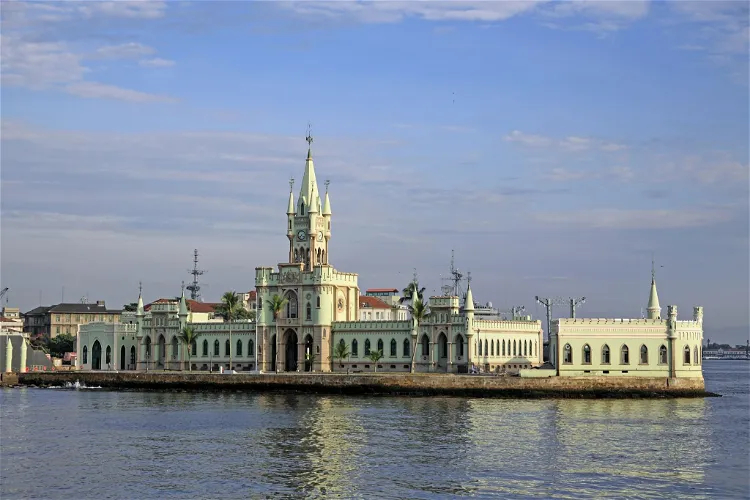
Fiscal Island
Rio de JaneiroIlha Fiscal, also known as Fiscal Island, is a significant landmark located in Guanabara Bay. It is situated near the historic city center of Rio de Janeiro, in southeastern Brazil. This island offers a unique blend of natural beauty and historical significance, making it an interesting destination for tourists.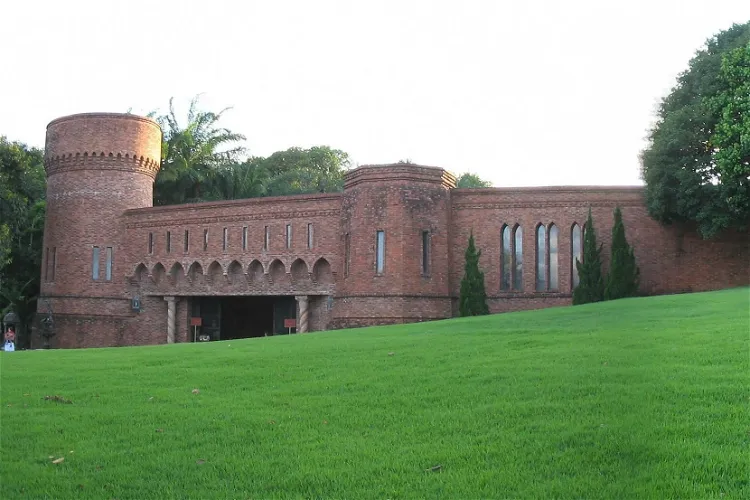
Ricardo Brennand Institute
RecifeThe Instituto Ricardo Brennand (IRB), also known as Castle Brennand, is a cultural institute located in Recife, Brazil. It was founded in 2002 by the art collector Ricardo Brennand. This institute is a significant cultural hub in the region, offering a unique blend of history, art, and architecture.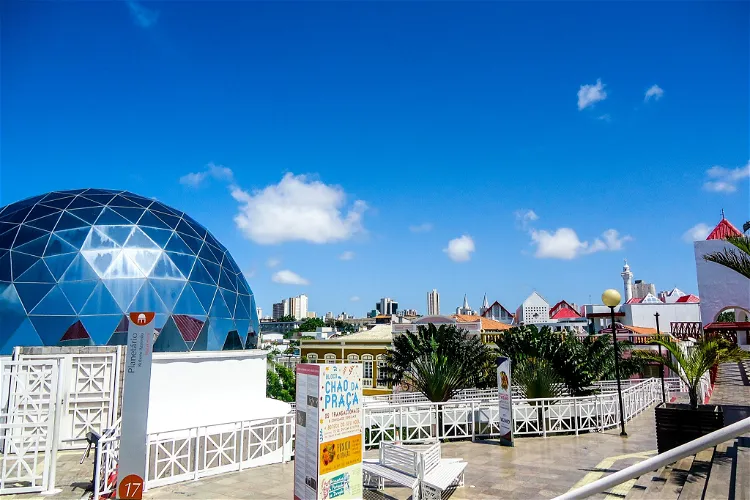
Dragon of the Sea Cultural Centre
FortalezaThe Centro Dragão do Mar de Arte e Cultura (CDMAC) is a cultural center situated in Fortaleza, Ceará. It is recognized as one of the largest cultural centers in Brazil, offering a vast array of artistic and cultural experiences.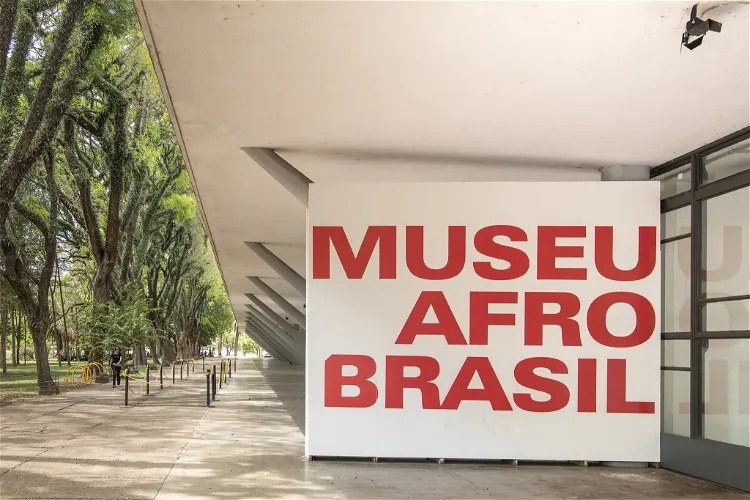
Afro Brasil Museum
São PauloThe Museu Afro Brasil is a historical, artistic, and ethnographic museum that is dedicated to the research, preservation, and exhibition of objects and works that are related to the cultural sphere of black people in Brazil. It is a public institution that is held by the Secretariat for Culture of the São Paulo State and is managed by the Museu Afro Brasil Association. The museum is located in Ibirapuera Park, a major urban park in São Paulo.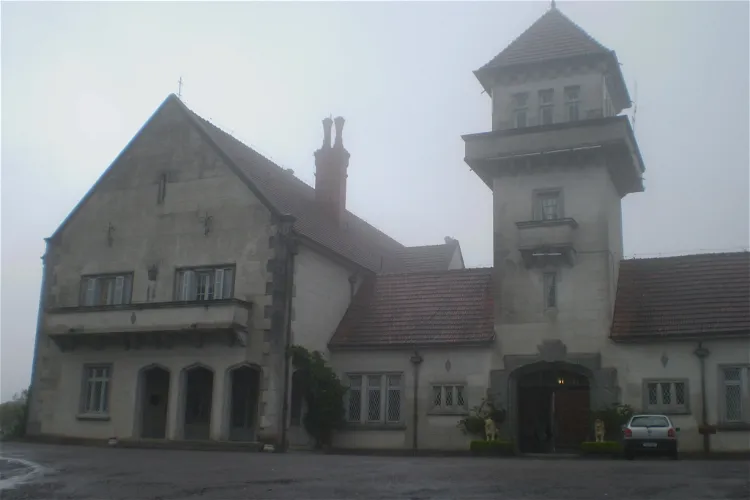
Boa Vista Palace
Campos do JordãoBoa Vista Palace, located in Campos do Jordão, serves as the official winter residence of the governor of the State of São Paulo. This grand structure, which began construction in 1938 and was completed in 1964, offers a unique insight into the history and culture of the region. Visitors can explore the palace and its grounds, taking in the stunning architecture and the panoramic views of the city's main neighborhoods.
Latin America Memorial
São PauloThe Latin America Memorial, located in São Paulo, Brazil, is a cultural, political, and leisure complex that was inaugurated in 1989. This complex serves as a monument to the cultural, political, social, and economic integration of Latin America. It is a place where visitors can immerse themselves in the rich history and diverse culture of Latin America.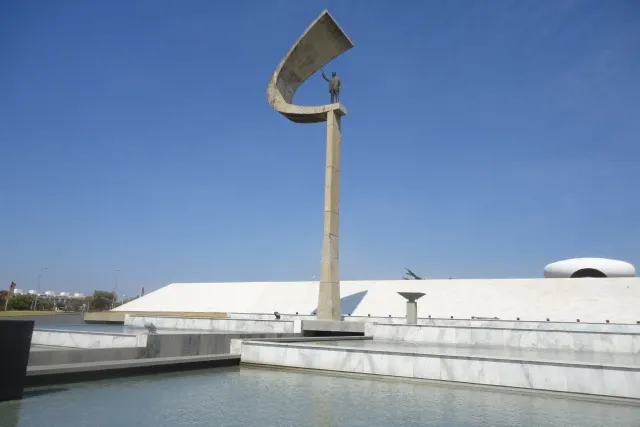
JK Memorial
BrasíliaThe JK Memorial in Brasília is a mausoleum and museum dedicated to Juscelino Kubitschek, the 21st president of Brazil and the founder of Brasília, which has been the capital of Brazil since 1960. This memorial offers a deep insight into the life and works of Kubitschek, making it a significant place for those interested in Brazilian history and culture.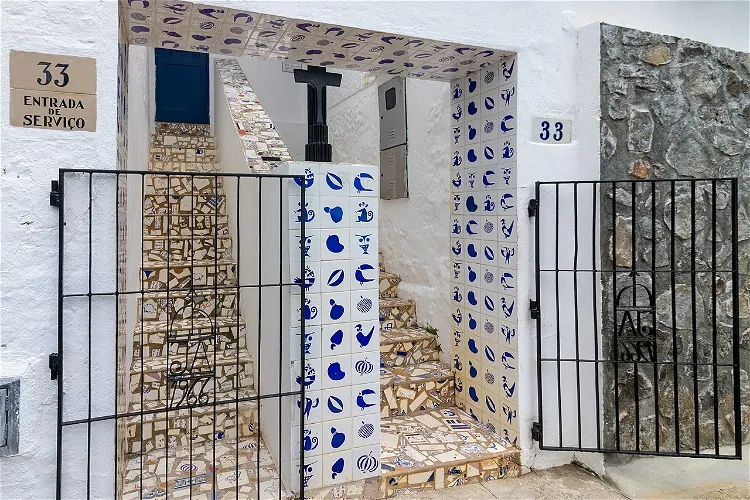
Casa do Rio Vermelho
SalvadorCasa do Rio Vermelho, also known as Casa de Jorge Amado, is a significant cultural site in Salvador, Bahia. This was the residence of the renowned writer couple Jorge Amado and Zélia Gattai. The house is located in the vibrant neighborhood of Rio Vermelho, on Alagoinhas Street.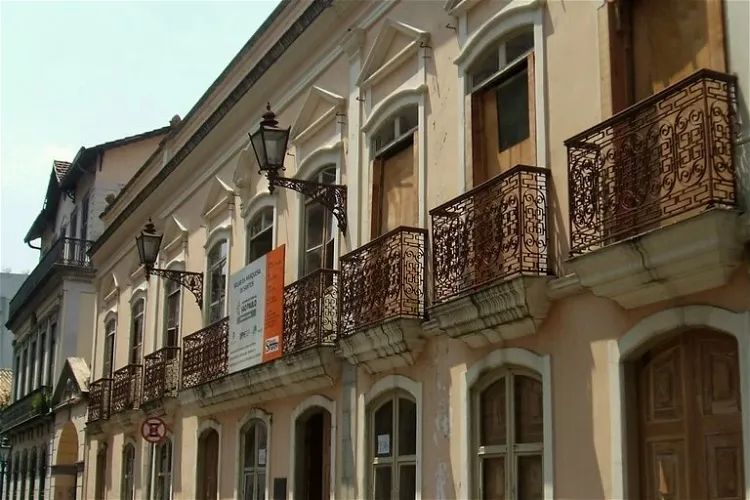
Solar da Marquesa de Santos
São PauloThe Solar da Marquesa de Santos is a historic manor house situated in the heart of São Paulo, Brazil. It currently serves as the headquarters for the Cidade de São Paulo museum and hosts a variety of cultural exhibitions. This location offers visitors a unique opportunity to explore the rich history of São Paulo while enjoying a diverse range of cultural displays.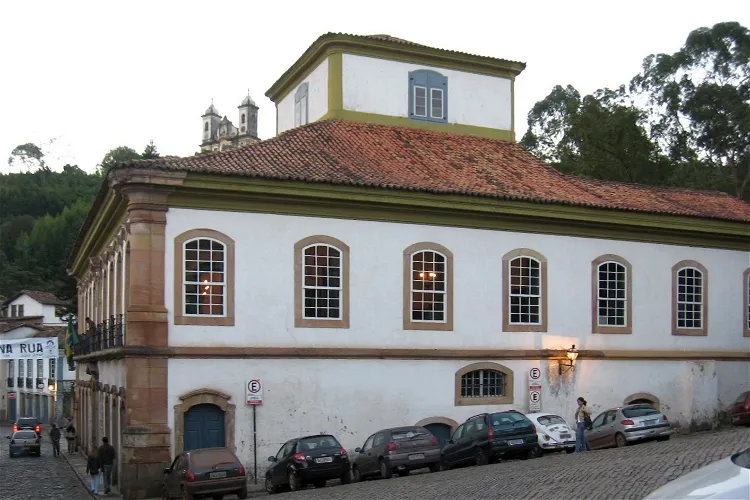
Museu Casa dos Contos
Ouro PretoCasa dos Contos is a museum situated in Ouro Preto, Minas Gerais, Brazil. It is a monument built in the Baroque style, reflecting the rich architectural heritage of the region. The primary objective of this museum is to preserve the history of the Gold Cycle - a significant period in Brazil's economic history. Additionally, it also serves to promote national culture, offering visitors a glimpse into the country's past.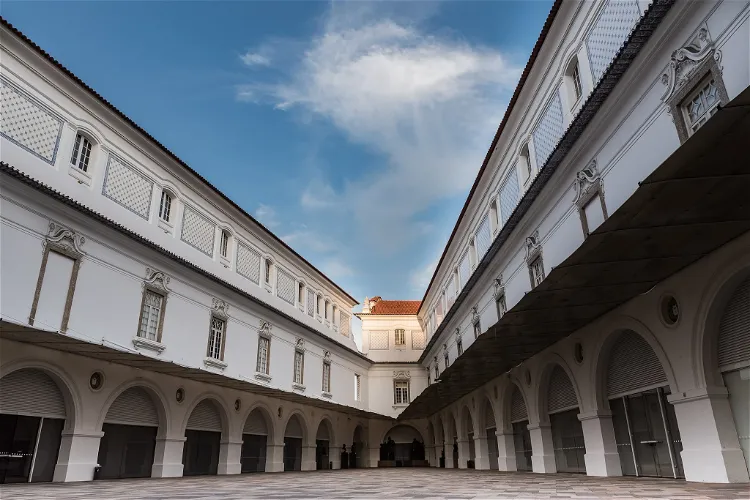
National History Museum
Rio de JaneiroThe National Historical Museum of Brazil, established in 1922, is home to over 287,000 items. This includes the largest numismatic collection in Latin America, making it a significant destination for those interested in history and numismatics. The museum's vast collection offers a comprehensive insight into Brazil's rich history and cultural heritage.
Museu da Casa Brasileira
São PauloThe Museu da Casa Brasileira (MCB) in São Paulo is a museum that focuses on the aspects of Brazilian living through the lens of architecture and design. For over five decades, it has established itself as a national and international reference in these fields. The museum promotes programs such as the MCB Design Award, a competition created in 1986 to encourage Brazilian production in the segment, and the 'Houses of Brazil' project, aimed at preserving the memory of the diversity of Brazilian living.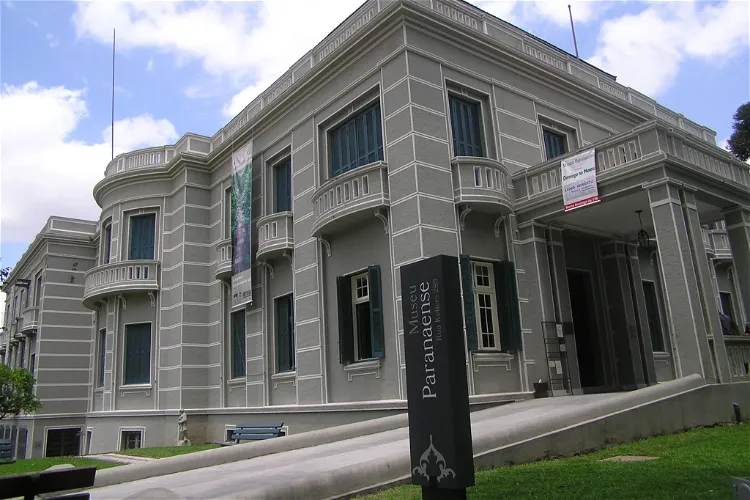
Museu Paranaense
CuritibaThe Museu Paranaense is housed in the São Francisco Palace, a sprawling space covering an area of 4,700 m². The museum not only showcases its historical collection in dedicated exhibition rooms but also hosts temporary exhibitions that delve into various historical and social contexts. Additionally, the museum is equipped with a library, an auditorium, a laboratory, and rooms for courses. It regularly conducts courses, lectures, workshops, and artistic presentations, offering a comprehensive cultural experience for visitors.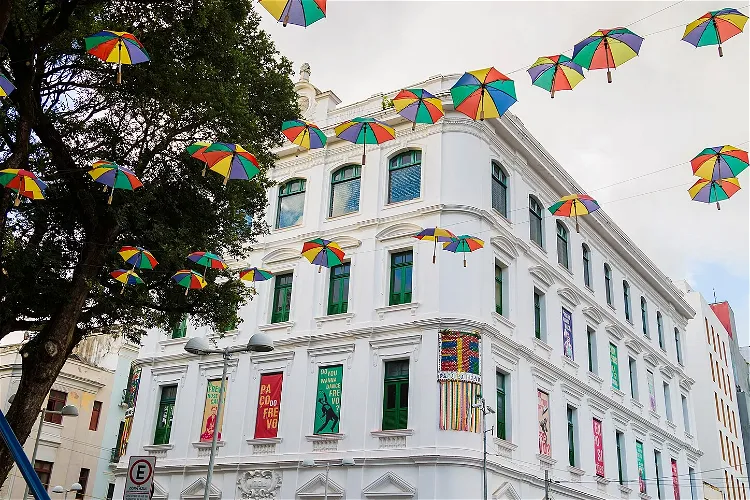
Paço do Frevo
RecifePaço do Frevo is a cultural hub located in Recife, the capital of Pernambuco in Brazil. It is dedicated to the promotion, research, leisure, and training in the areas of dance and music of frevo, a traditional Brazilian dance and music genre. This space provides an immersive experience into the vibrant culture of frevo, offering visitors a chance to learn, enjoy, and even participate in this unique art form.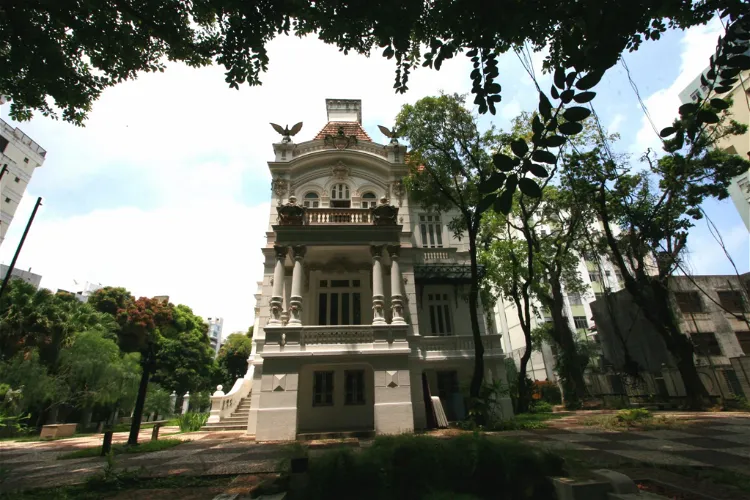
Rodin Bahia Arts Palace
SalvadorThe Rodin Bahia Museum is situated in the Graça neighborhood of Salvador, within the Palacete do Comendador Bernardo Martins Catharino. This location is not only a museum but also a historical site, offering visitors a chance to explore the rich history of Salvador while appreciating the works of the French sculptor Auguste Rodin.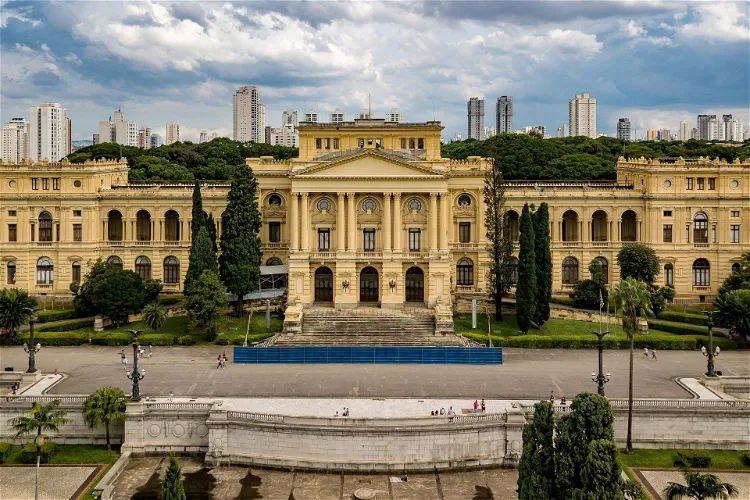
Paulista Museum
São PauloThe Museu Paulista, also known as Museu do Ipiranga, is a significant historical site in Brazil. It is located near the spot where Emperor Pedro I proclaimed Brazil's independence. This museum is part of the University of São Paulo and is a key location for understanding the country's history.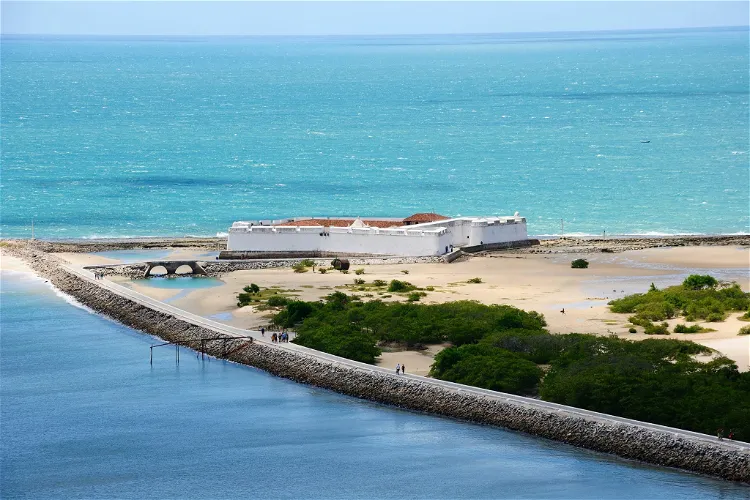
Fort of the Three Wise Men
NatalThe Forte dos Reis Magos, also known as the Fortaleza dos Reis Magos, is a historical fortress situated in the city of Natal, in the Brazilian state of Rio Grande do Norte. This fortress is a significant landmark in the region, offering visitors a glimpse into the past.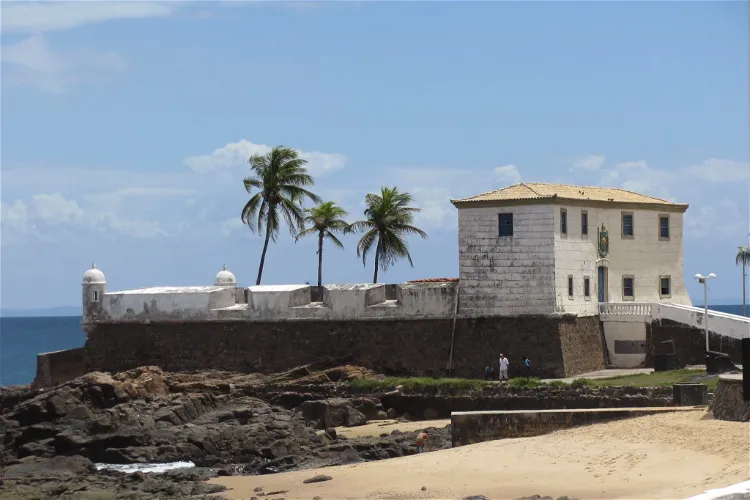
Forte de Santa Maria
SalvadorThe Forte de Santa Maria is a historical site located off the beach of Porto da Barra, in the Barra neighborhood. This location was the original port of the city of Salvador, situated on the coast of the state of Bahia, in Brazil. The fort offers a glimpse into the country's past and is a significant landmark in the region.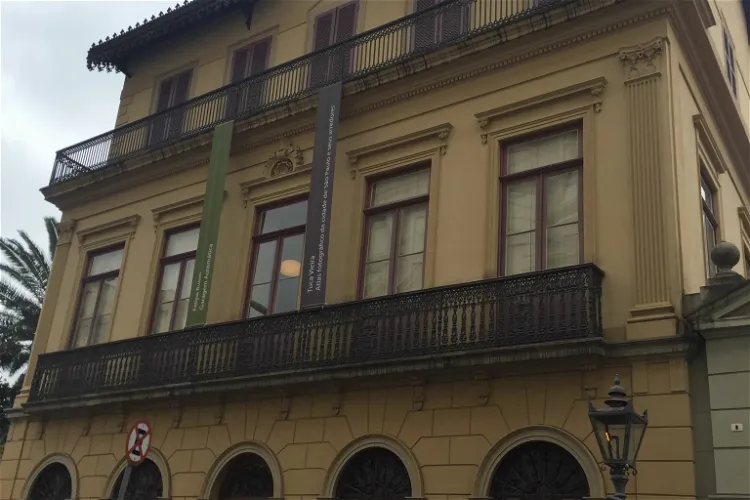
Casa Número Uno
São PauloCasa Número Uno is part of the Museum of the City of São Paulo, which comprises thirteen historic buildings. It houses the administrative core of this institution, along with the Solar da Marquesa de Santos, Beco do Pinto, and the Museu Padre Anchieta. Today, the residence hosts the city's iconographic collection, Casa da Imagem, dedicated to the photographic memory of the capital.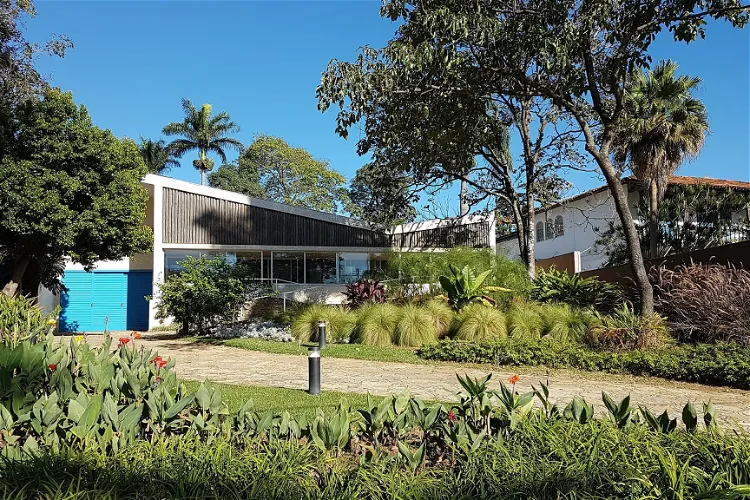
Kubitschek Residence Museum
Belo HorizonteThe Kubitschek Residence Museum is a unique museum house situated on the picturesque shore of Lake Pampulha in Belo Horizonte, Minas Gerais, Brazil. This location offers visitors a chance to explore the museum while also enjoying the beautiful lakeside setting.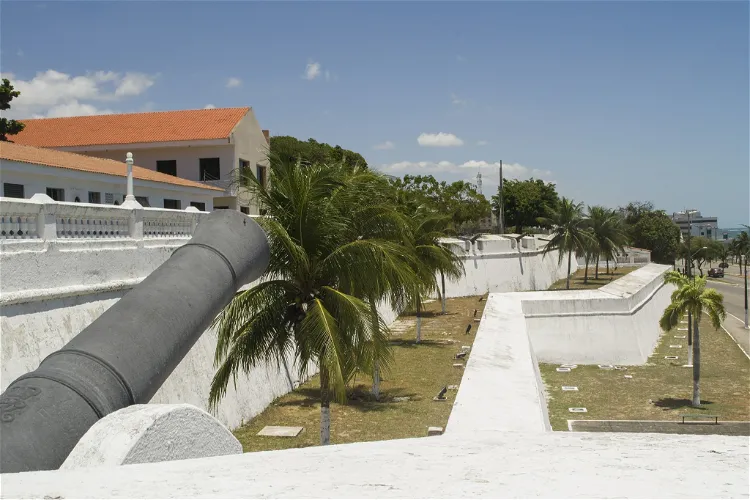
Fortress of Our Lady of the Assumption
FortalezaThe Fortress of Our Lady of the Assumption is a significant historical site located on the left bank of the mouth of the Pajeú stream, on the Marajaitiba hill, in the city of Fortaleza, on the coast of the Brazilian state of Ceará. Its strategic location offers visitors a unique perspective of the city and its surrounding landscapes.
Colonial Family Museum
BlumenauThe Colonial Family Museum in Blumenau is a unique space that combines art, history, and memorial elements. It was established with the help of objects donated by Edith Gaertner, a former actress and the heiress of Hermann Bruno Otto Blumenau, a German pharmacist. This connection to a prominent local figure adds a personal touch to the museum's collection and provides a deeper understanding of the city's history.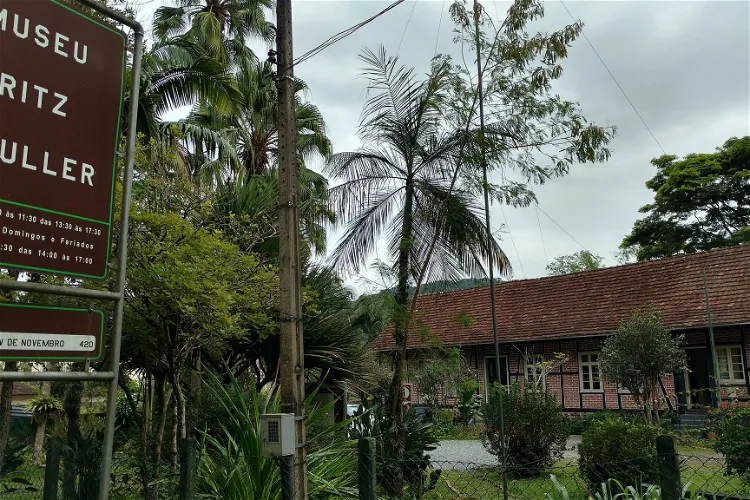
Museu de Ecologia Fritz Müller
BlumenauThe Museu de Ecologia Fritz Müller is situated in the Vorstadt district of the city of Blumenau. This location is easily accessible and offers a unique opportunity to explore the rich history and ecological diversity of the region.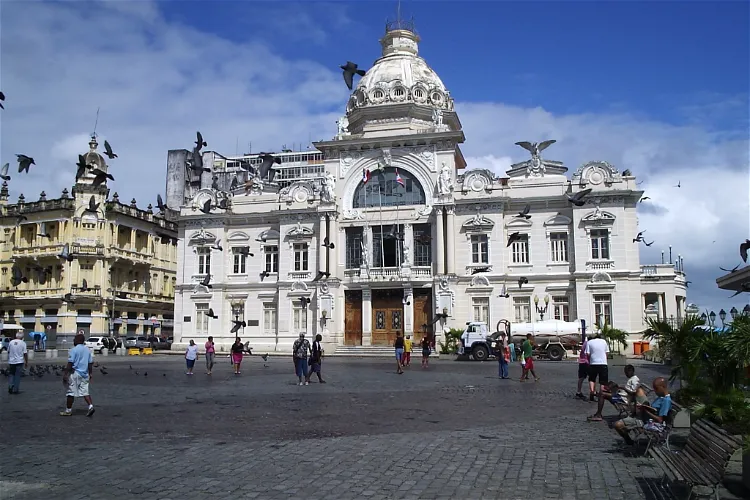
Rio Branco Palace
SalvadorThe Rio Branco Palace, one of the oldest palaces in Brazil, is located in Salvador, in the Tomé de Sousa square. This historic site was once the seat of government for the State of Bahia. Its location in the heart of Salvador makes it easily accessible for tourists, and its rich history adds to the cultural significance of the city.
Casa da Cultura (Recife)
RecifeThe Casa da Cultura is a hub for the sale of handicrafts in Recife, the capital of the Brazilian state of Pernambuco. This makes it a great place for tourists to explore local crafts and purchase unique souvenirs.
Bahia Naútico Museum
SalvadorA majestic fort with a lighthouse and an amazing well run nautic museum, this place is a must visit for anyone visiting Salvador.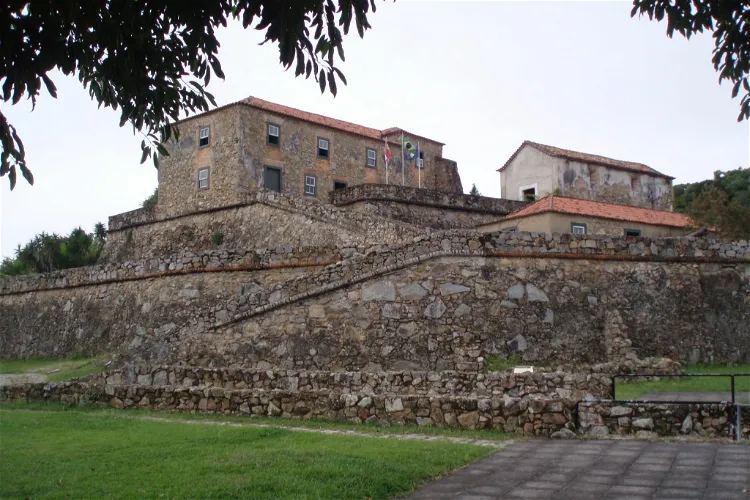
São José da Ponta Grossa Fortress
FlorianópolisThe São José da Ponta Grossa Fortress is a historical site located on Santa Catarina Island, in the municipality of Florianópolis, in the state of Santa Catarina, Brazil. This location offers visitors a chance to explore a significant part of Brazil's colonial history while enjoying the beautiful coastal scenery.
Rio Grande do Sul Museum of Art
Porto AlegreThe Rio Grande do Sul Museum of Art, also known as Museu de Arte do Rio Grande do Sul Ado Malagoli - MARGS, is an art museum situated in the heart of Porto Alegre. This museum is a significant cultural landmark in the state of Rio Grande do Sul, offering visitors a chance to explore a diverse collection of visual arts.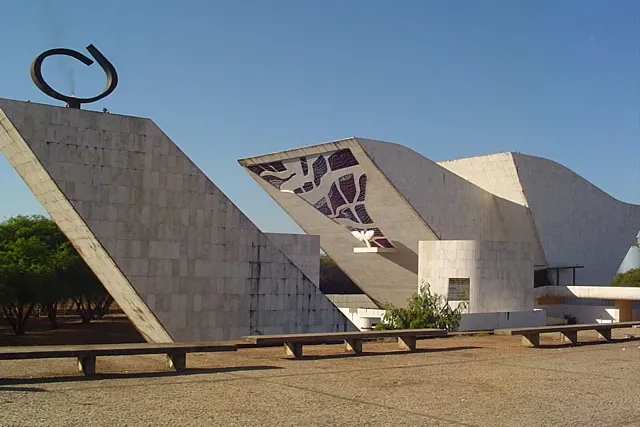
Tancredo Neves Pantheon of the Fatherland and Freedom
BrasíliaThe Tancredo Neves Pantheon of the Fatherland and Freedom is a significant monument located in Brasília, the capital of Brazil. It is a cenotaph, a monument erected in honour of people whose remains are elsewhere, dedicated to national heroes. The Pantheon was conceived following the death of Tancredo Neves, the first elected civilian president after twenty years of military rule.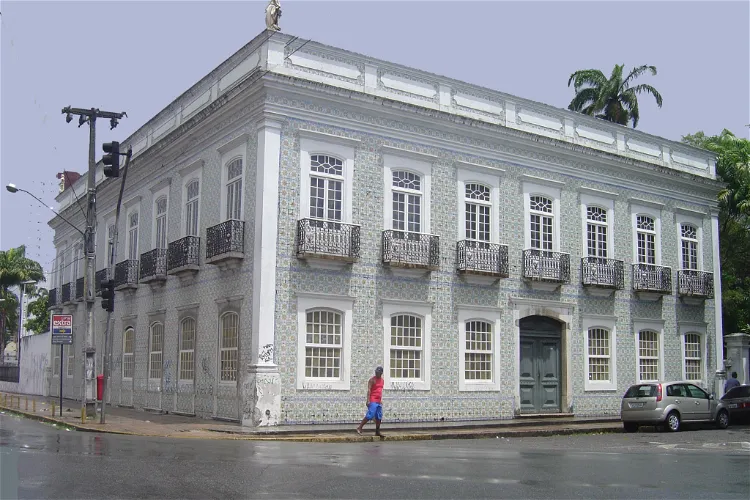
Abolition Museum
RecifeThe Abolition Museum, situated in Recife, the capital of Pernambuco, Brazil, is a unique institution that focuses on a significant part of the country's history. It is one of the few museums in Brazil that provides an in-depth exploration of the abolition of slavery, making it a unique destination for those interested in understanding this crucial period in Brazilian history.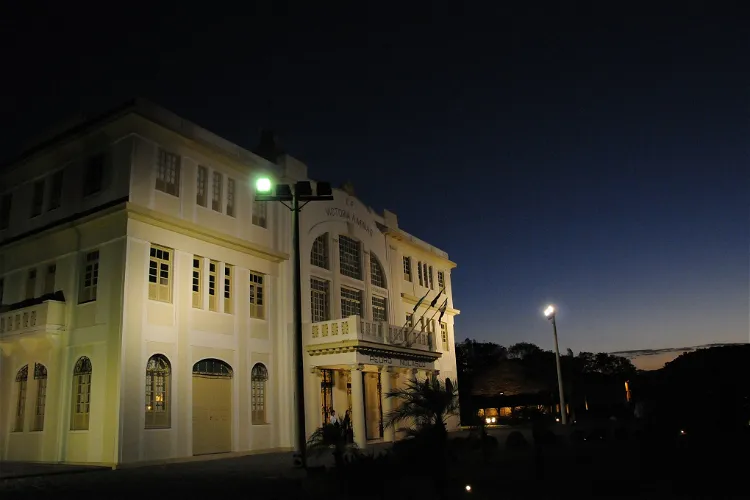
Vale Museum
Vila VelhaThe Vale Museum is situated in the city of Vila Velha, Espírito Santo. It is housed in the historic Pedro Nolasco Station of the Vitória - Minas railway. This location adds a unique historical charm to the museum, making it a fascinating destination for tourists interested in history and architecture.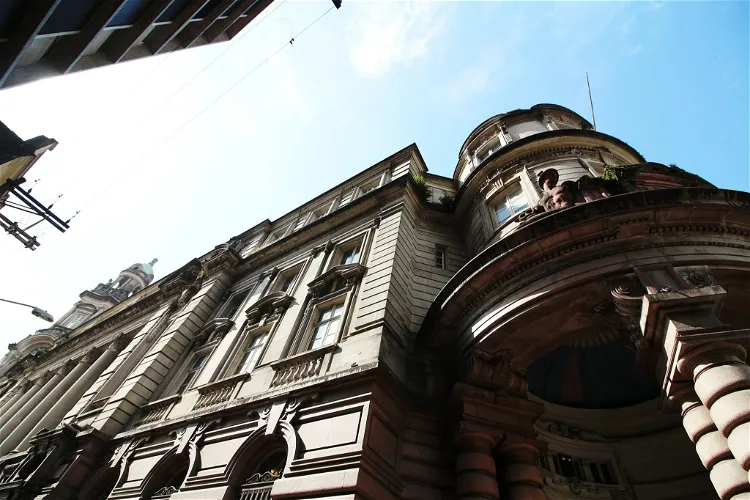
Bolsa Oficial de Café
SantosThe Bolsa de Café, or the Palácio da Bolsa Oficial de Café, is a former coffee trading center that has been transformed into a museum. It is situated in the historic center of Santos, in the state of São Paulo, Brazil. This location offers tourists a unique opportunity to explore the rich history of coffee trading in Brazil, within a building that has been a significant part of this history.
Museo Padre Anchieta
São PauloThe Museo Padre Anchieta is situated in the Pátio do Colégio square, in the heart of São Paulo, Brazil. This location is not only central but also historically significant, as it was chosen by the Jesuits Manuel da Nóbrega and José de Anchieta for the foundation of the city in 1554.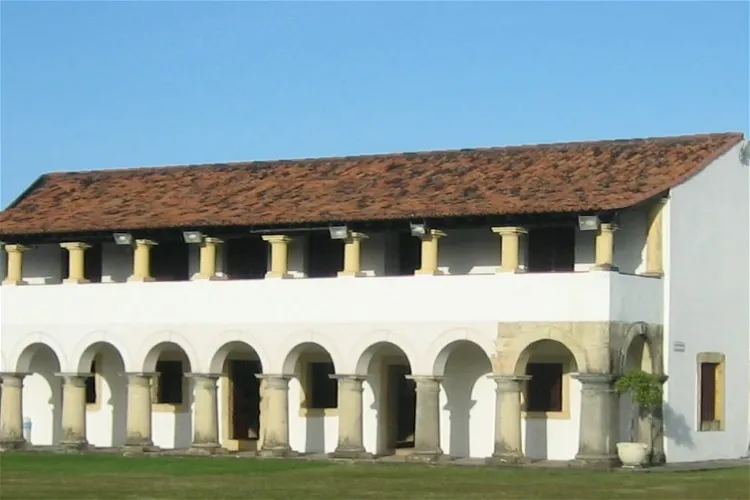
Fort of Santa Catarina
CabedeloThe Forte de Santa Catarina is a historical fort situated in Cabedelo, Paraíba, Brazil. This fort is a significant part of Brazil's history and offers a glimpse into the country's past. Visitors can explore the fort and learn about its historical significance.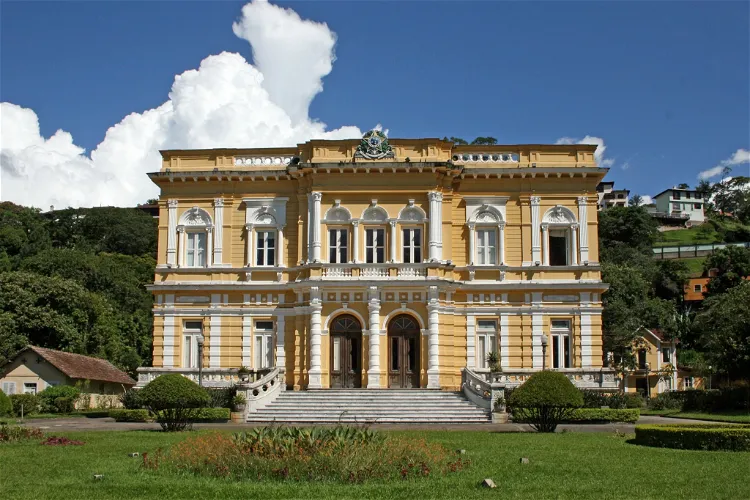
Rio Negro Palace
ManausThe Palácio Rio Negro, located in Manaus, Brazil, has a rich history as it once served as the seat of government and was the residence of the governor of the state of Amazonas. This historical significance adds to the allure of the palace, making it a point of interest for tourists who are keen on learning about the political history of the region.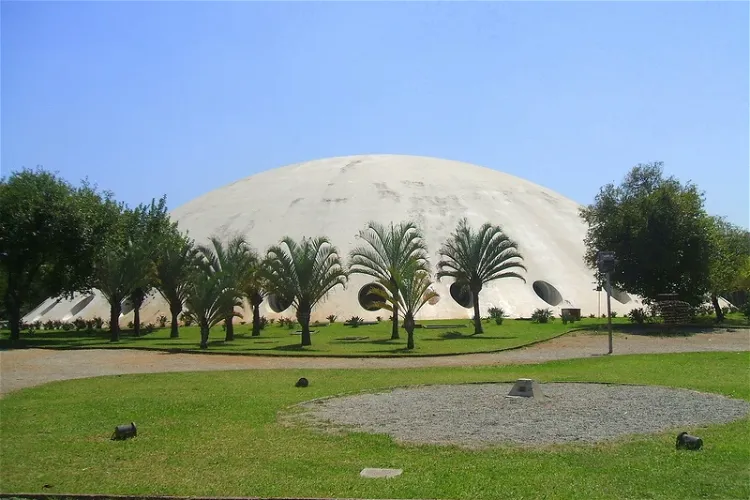
Pabellón Lucas Nogueira Garcez
São PauloThe Lucas Nogueira Garcez Pavilion, also known as Oca, is an exhibition pavilion situated in the Ibirapuera Park in São Paulo, Brazil. This iconic structure is a popular destination for locals and tourists alike, offering a variety of exhibitions throughout the year.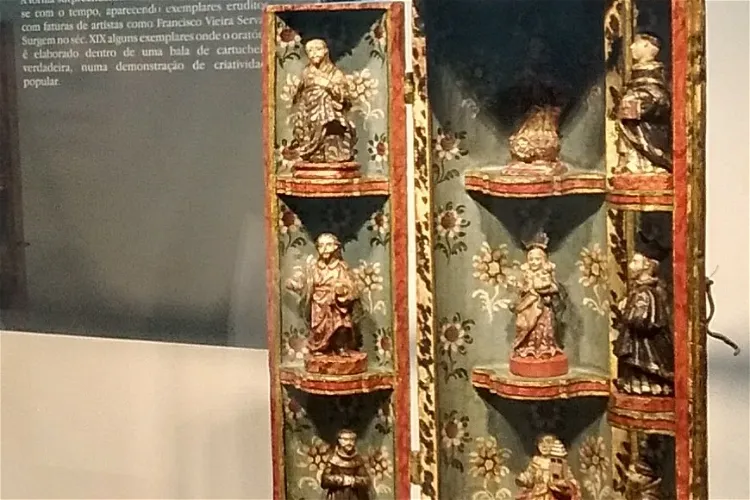
Oratory Museum
Ouro PretoThe Oratory Museum is a significant cultural institution in Brazil, housed in a three-story historic mansion in the city of Ouro Preto, Minas Gerais. The museum is conveniently located adjacent to the Church of Our Lady of Carmo, making it an accessible destination for tourists visiting the area.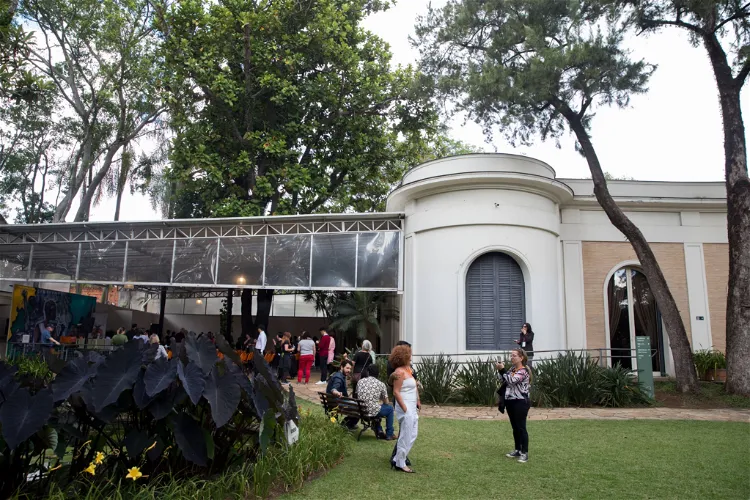
Ema Gordon Klabin Cultural Foundation
São PauloThe Ema Gordon Klabin Cultural Foundation, established in 1978, is an art museum located in the vibrant city of São Paulo, Brazil. This not-for-profit private institution was created by Brazilian collector and philanthropist Ema Gordon Klabin with the aim of preserving and showcasing her extensive art collection, as well as promoting cultural, artistic, and scientific activities.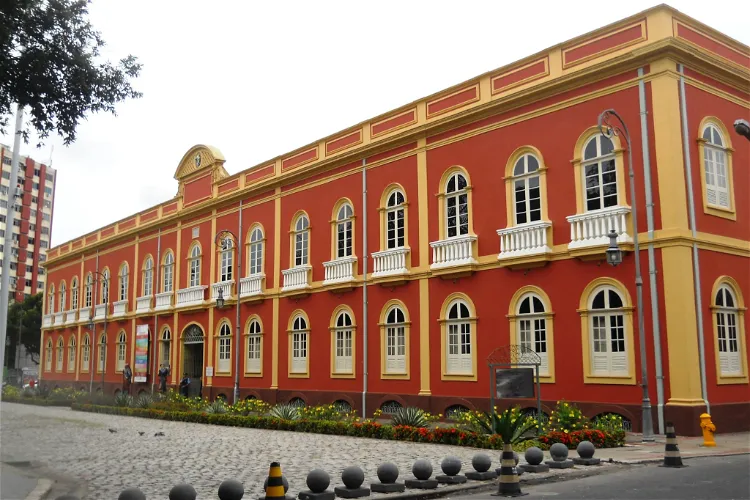
Provincial Palace
ManausThe Provincial Palace, also known as Palacete Provincial, is a significant historical site located in the heart of Manaus, the capital of the state of Amazonas. This centenary building has been a witness to many important events related to the social and political life of the people of Amazonas. It is situated in the historic center of the city, making it easily accessible for tourists.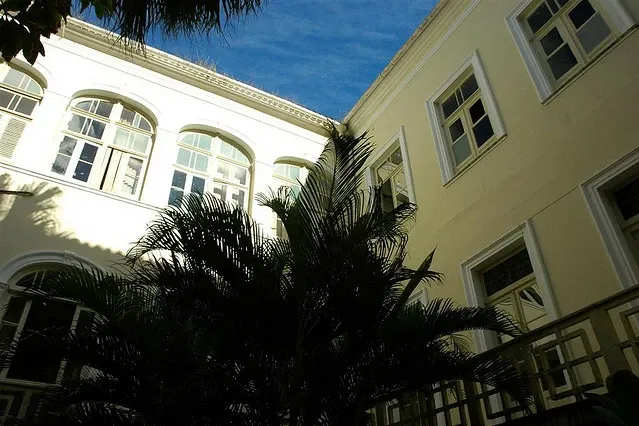
Museu de Arqueologia e Etnologia da Universidade Federal da Bahia
SalvadorThe Museu de Arqueologia e Etnologia (MAE) is situated in the vibrant city of Salvador. Specifically, it can be found at the Largo Terreiro de Jesus, housed within the building of the Faculty of Medicine of the Federal University of Bahia, in the historic district of Pelourinho. This location is not only central but also steeped in history, making it an interesting destination for tourists.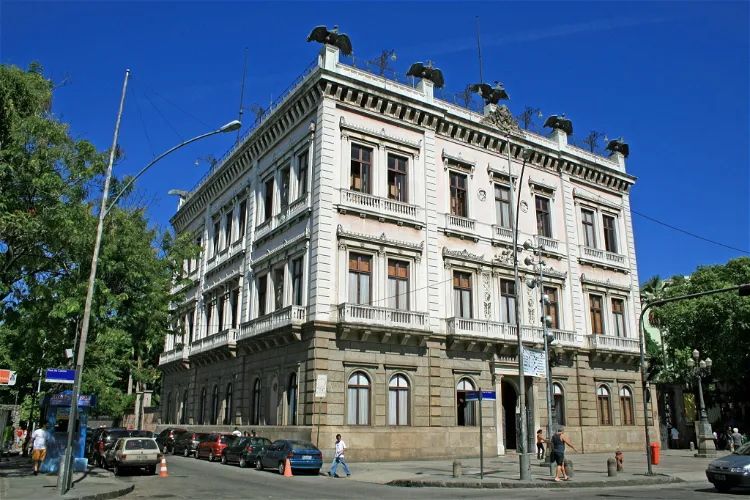
Republic Museum
Rio de JaneiroThe Catete Palace, an urban mansion located in the Flamengo neighborhood of Rio de Janeiro, is a significant historical site. The property spans from Rua do Catete to Praia do Flamengo. The construction of this grand mansion began in 1858 and was completed in 1867, making it a testament to the architectural prowess of the era.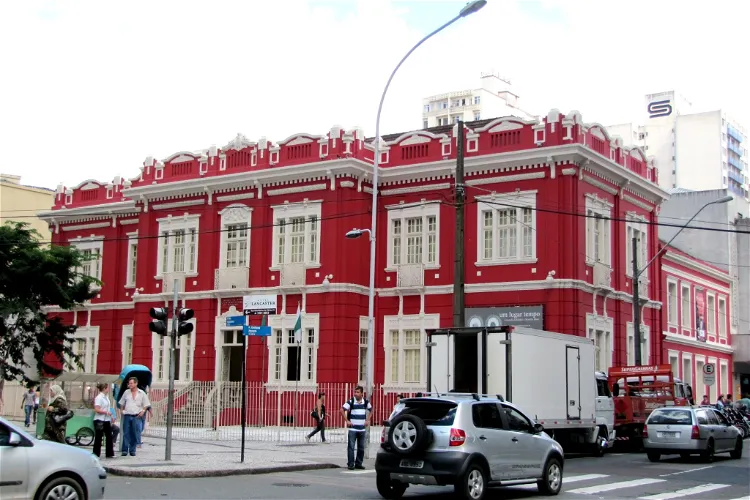
Museu de Arte Contemporânea do Paraná
CuritibaThe Museu de Arte Contemporânea do Paraná (MAC/PR) is a museum maintained by the Paraná government. It is home to a diverse collection of art, including paintings, sculptures, drawings, prints, and other types of works. The museum primarily features works from various Brazilian artists, with a special emphasis on artists from the Paraná region.
Rio Negro Palace
PetrópolisThe Palácio Rio Negro, or Rio Negro Palace, is situated in the scenic city of Petrópolis, nestled in the mountainous region of the state of Rio de Janeiro in Brazil. This location offers visitors a unique blend of natural beauty and historical significance, making it an interesting destination for those interested in both nature and history.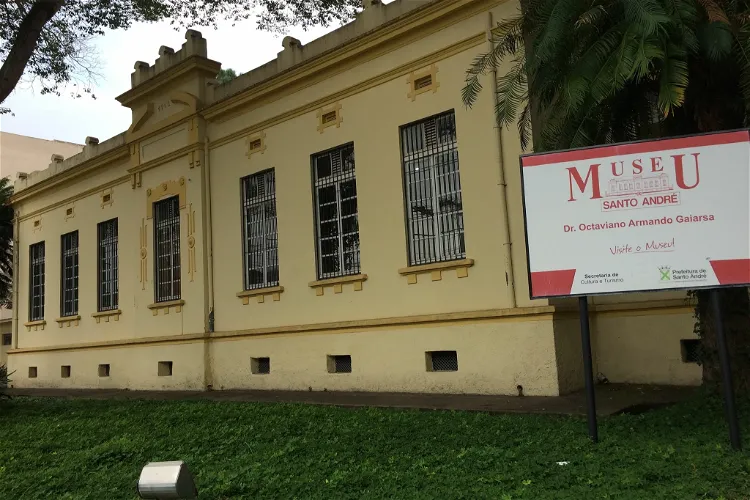
Museum of Santo André Dr. Octaviano Armando Gaiarsa
Santo AndréThe Museum of Santo André Dr. Octaviano Armando Gaiarsa, located in Santo André, São Paulo, is a significant cultural institution in the city. Officially established as a museum in 1982, it is housed in a building that was designed and developed in 1914 by the architect José Van Humbeeck. This historical building adds to the charm and cultural significance of the museum, making it a noteworthy destination for tourists interested in history and architecture.
Mineiro Museum
Belo HorizonteThe Mineiro Museum, located in the city of Belo Horizonte, Minas Gerais, is a significant cultural institution in Brazil. It was inaugurated on May 10, 1982, at the site of the former Mineiro Senate. Today, it is part of the Cultural Circuit Praça da Liberdade project, which is a network of cultural institutions and attractions in the city.
Memorial Minas Gerais Vale
Belo HorizonteThe Memorial Minas Gerais Vale Museum is a cultural and artistic institution located in Belo Horizonte, Minas Gerais. It is dedicated to showcasing the traditions and history of the people of Minas Gerais. This museum provides a unique opportunity for visitors to immerse themselves in the rich cultural heritage of the region.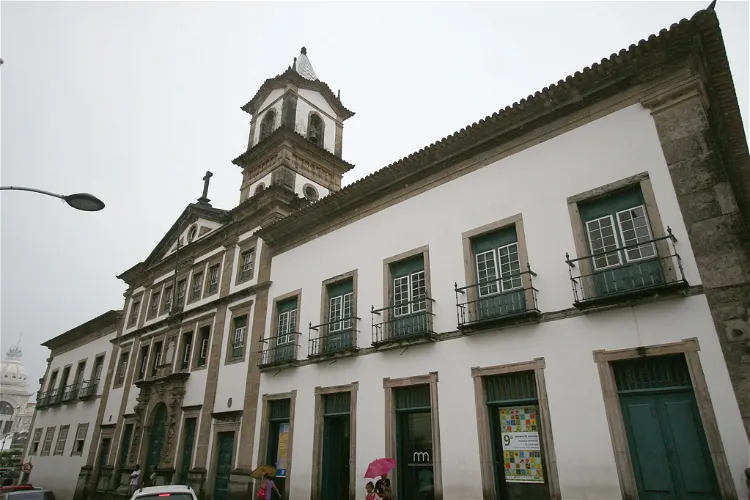
Museum of Mercy
SalvadorHoused in a stunning 17th century edifice that also served as the first hospital in Brazil, its guided tours show marvelous works of art.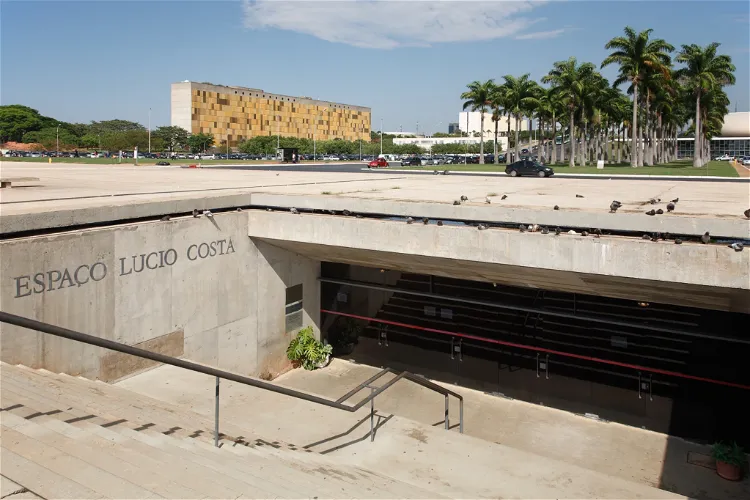
Espaço Lúcio Costa
BrasíliaEspaço Lúcio Costa is a thematic museum located in Brasília, the capital of Brazil. The museum is dedicated to the renowned architect and urban planner Lúcio Costa. Costa was the winner of the National Contest for the Pilot Plan of Brasília, which defined the city's design. The museum serves as a tribute to his significant contributions to the city's architecture and urban planning.
Museu Casa de Pedro Américo
AreiaThe Museu Casa de Pedro Américo is situated on Pedro Américo street, which is the birthplace of the renowned painter, novelist, and poet Pedro Américo de Figueiredo e Melo. This location holds significant historical and cultural value, as it is where the artist was born and spent his early years. Visitors can gain a deeper understanding of Pedro Américo's life and work by visiting this museum.
Monument to the Dead of World War II
Rio de JaneiroThe Monumento Nacional aos Mortos da Segunda Guerra Mundial, popularly known as Monumento aos Pracinhas, is a significant landmark located in Eduardo Gomes Park, in the city of Rio de Janeiro, Brazil. This monument was conceived by Marshal João Baptista Mascarenhas de Moraes, commander of the Brazilian Expeditionary Force, to honor the Brazilian soldiers who lost their lives in Italy during World War II.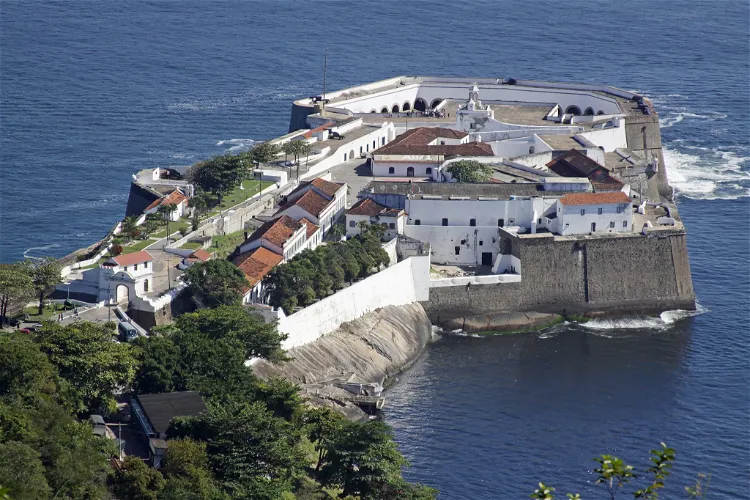
Santa Cruz da Barra Fortress
NiteróiThe Santa Cruz da Barra Fortress is a historical site located on the east bank of Guanabara Bay, in the Jurujuba district of Niterói, in the state of Rio de Janeiro, Brazil. This location offers a unique view of the bay and is easily accessible for tourists visiting the area.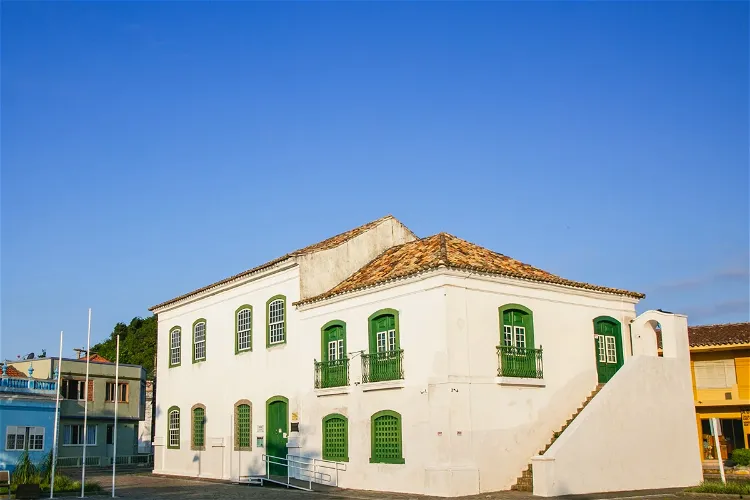
Museu Anita Garibaldi
LagunaThe Anita Garibaldi Museum is situated in the heart of the historic center of Laguna, a city in the southern part of the state of Santa Catarina in Brazil. This location makes it easily accessible for tourists visiting the city.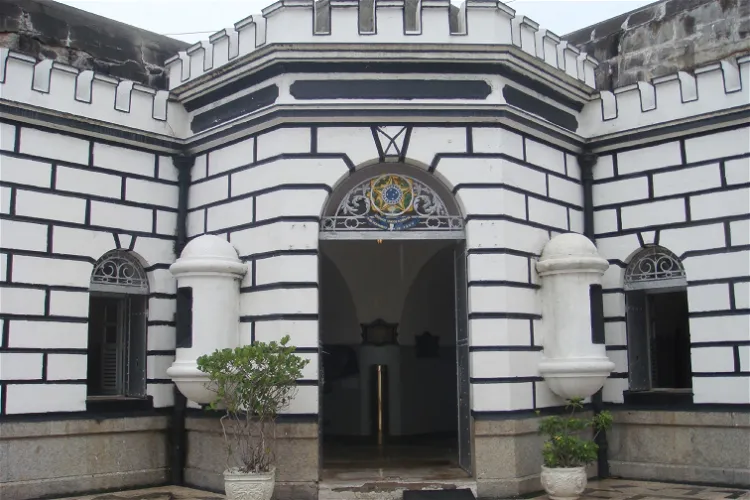
Copacabana Fort
Rio de JaneiroThe Forte de Copacabana is a military base located at the southern end of the beach in the Copacabana district of Rio de Janeiro. This historical site is open to the public and offers a unique insight into the military history of Brazil.
Museu Nacional de Imigração e Colonização
JoinvilleThe Museu Nacional de Imigração e Colonização, located in Joinville, in the north of Santa Catarina, is a significant repository of historical memories and objects related to immigration in the South of Brazil. The museum's collection provides a comprehensive insight into the historical process of immigration and colonization in the region.
Casa de Marechal Deodoro da Fonseca
Rio de JaneiroThe Casa de Marechal Deodoro da Fonseca is a historic mansion that dates back to the 19th century. It is situated in the heart of Rio de Janeiro, making it easily accessible for tourists. The mansion's rich history and central location make it a significant point of interest for those interested in Brazil's past.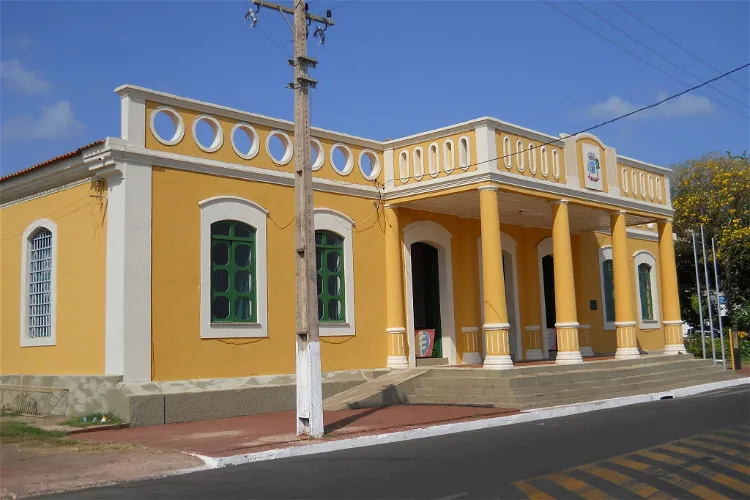
Museu João Fona
SantarémThe Museu João Fona, located in the city of Santarém in the state of Pará, is a historical building constructed between the years 1853 and 1868 by the engineer Marcos Pereira. This museum is the third oldest building in the city, adding to its historical significance.
Joinville Museum of Art
JoinvilleThe Joinville Museum of Art is located in the heart of Joinville, Santa Catarina, at Rua XV de Novembro. The museum is housed in the former residence of Ottokar Doerffel, a German immigrant who was a prominent politician and the creator of Joinville's first newspaper. This historic building, dating back to the second half of the 19th century, adds a unique charm to the museum and offers visitors a glimpse into the city's past.- 70
Habits and Customs Museum
BlumenauThe Habits and Customs Museum is housed in a mansion dating back to 1898, which once belonged to the German Consul Gustav Salinger. This historical building adds to the charm and authenticity of the museum, making it a fascinating place for tourists to explore. 
Memorial do Rio Grande do Sul
Porto AlegreThe Rio Grande do Sul Memorial is a cultural center situated in the heart of Porto Alegre. It is housed in a historic property located in Alfândega Square, which is part of the city's historic center. This location makes it easily accessible for tourists who are exploring the city.
Júlio de Castilhos Museum
Porto AlegreThe Júlio de Castilhos Museum holds the distinction of being the oldest museum in Rio Grande do Sul. It was inaugurated as a tribute to the journalist and politician Júlio de Castilhos, who served as the governor of Rio Grande twice. This historical significance adds a layer of depth to the museum's exhibits and provides visitors with a glimpse into the region's past.
Eva Klabin Foundation
Rio de JaneiroThe Eva Klabin House Museum, also known as Casa Museu Eva Klabin, is a historic house museum situated in the vibrant city of Rio de Janeiro, Brazil. The museum was founded in 1990 by the renowned Brazilian collector and philanthropist, Eva Klabin. The museum is housed in the residence where Klabin lived for over thirty years, making it a unique destination that combines personal history with an extensive art collection.
Museu Getúlio Vargas
Rio de JaneiroThe Getúlio Vargas Museum, also known as the Getúlio Vargas House Museum, is a significant cultural site located in the city of São Borja in Rio Grande do Sul. The museum is dedicated to preserving the residence of former president Getúlio Vargas, offering visitors a unique insight into the life and times of one of Brazil's most influential political figures.
Benjamin Constant House Museum
Rio de JaneiroThe Benjamin Constant House Museum is a part of the Brazilian Institute of Museums (Ibram), which falls under the Ministry of Culture. It is situated in the Santa Teresa neighborhood of Rio de Janeiro, a location known for its cultural and historical significance. The museum was inaugurated on October 18, 1982, in the house where Benjamin Constant Botelho de Magalhães, a professor of mathematics, engineer, and military officer, resided.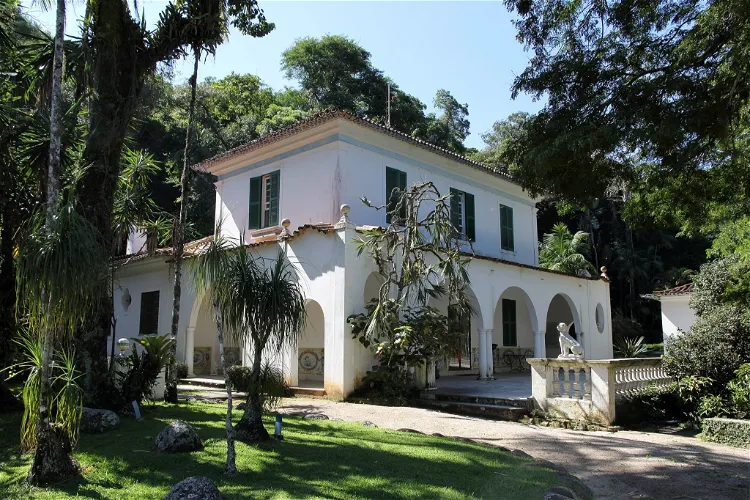
Dam Museum
Rio de JaneiroThe Açude Museum, located in the Alto da Boa Vista neighborhood in Rio de Janeiro, Brazil, is a former colonial-style property that has been transformed into a museum. This unique location offers visitors a chance to explore a piece of Brazil's colonial history while enjoying the museum's diverse collections.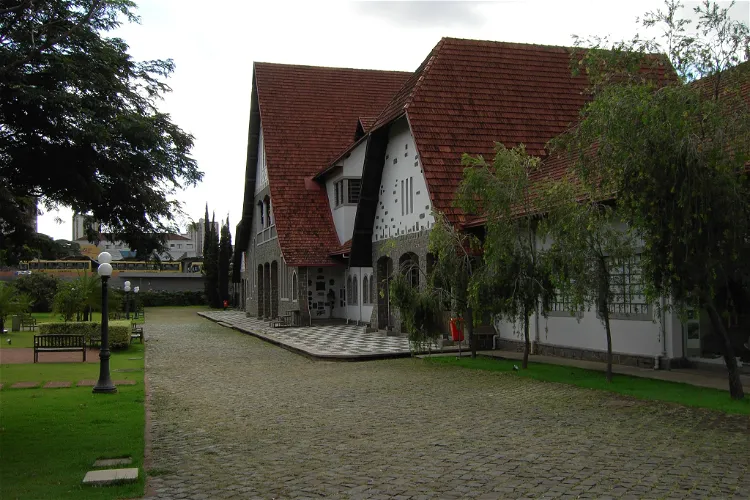
Londrina Historical Museum
LondrinaThe Londrina Historical Museum Padre Carlos Weiss is a part of the State University of Londrina (UEL). This connection to the university adds a layer of academic credibility to the museum, making it a reliable source of historical information about the city and region.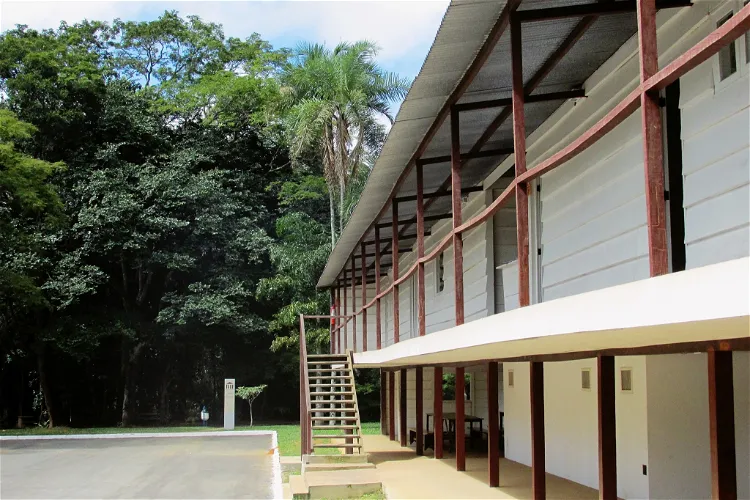
Catetinho
Park WayThe Catetinho, also known as Palácio do Catetinho, is a significant historical site in Brazil. It is a public official building of the Federative Republic of Brazil, located approximately ten kilometers from Gama. This location served as the first official headquarters and workplace of the President of the Federative Republic of Brazil, Juscelino Kubitschek, and his Vice President in Brasília.
Parque de Ciência e Tecnologia da USP (CienTec)
São PauloThe Parque de Ciência e Tecnologia da Universidade de São Paulo (CienTec) is an interactive and open-air museum. It is located in the Água Funda neighborhood, in the city of São Paulo. This location makes it easily accessible for tourists visiting the city. The park offers a unique experience of learning and exploration in the field of science and technology.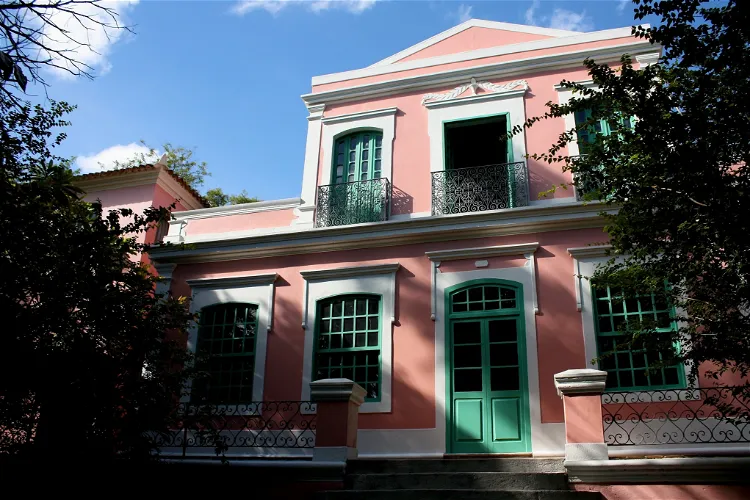
Gilberto Freyre Foundation
RecifeThe Gilberto Freyre Foundation is a cultural institution that is situated in the Magdalena and Gilberto Freyre House-Museum. This museum is located in Recife, which is the capital city of Pernambuco in Brazil. It is a significant cultural hub in the region and offers a unique insight into the life and works of Gilberto Freyre.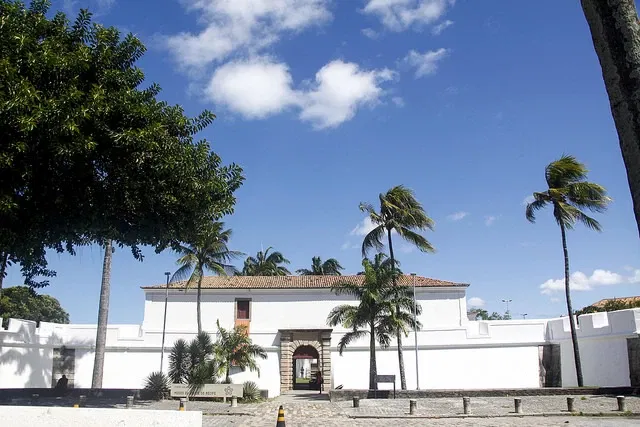
Recife City Museum
RecifeThe Recife City Museum is a significant cultural institution located in Recife, the capital of Pernambuco. Established in 1982, the museum is housed in the Fort of São Tiago das Cinco Pontas, situated in the southern part of the city. The museum is under the administration of the Secretariat of Culture of the Municipality of Recife, further emphasizing its importance in the cultural landscape of the city.
Museu de Porto Alegre Joaquim Felizardo
Porto AlegreThe Joaquim Felizardo Museum of Porto Alegre is a historical museum situated in the city of Porto Alegre, the capital of the Brazilian state of Rio Grande do Sul. The museum is housed in the Lopo Gonçalves Manor House, which is located at 582 João Alfredo Street. This location is steeped in history and provides a unique setting for the museum.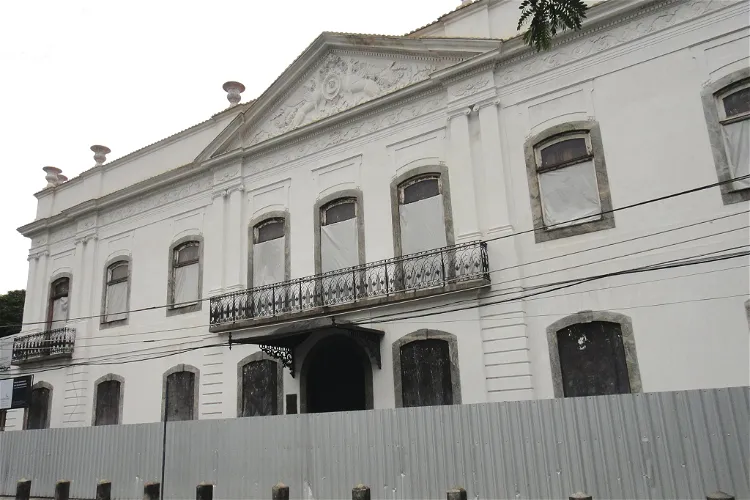
Casa da Marquesa de Santos - Museum of Brazilian Fashion
Rio de JaneiroThis Neo-Classical building situated off the beaten path holds a collection of artefacts from the Brazilian Belle Epoque.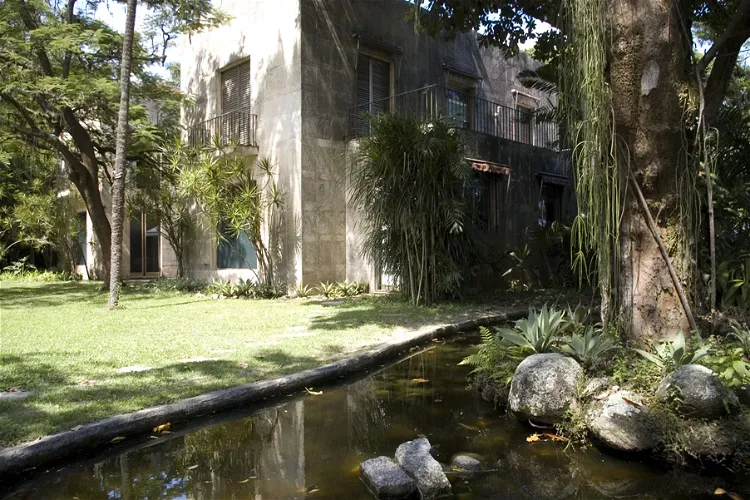
Chácara do Céu Museum
Rio de JaneiroThe Chácara do Céu Museum is an art museum situated in the Santa Teresa neighborhood of Rio de Janeiro, Brazil. This museum is part of the Castro Maya Museums, along with the Açude Museum. The museum is housed in one of the former residences of businessman and patron Raymundo Ottoni de Castro Maya, known since 1876 as Chácara do Céu.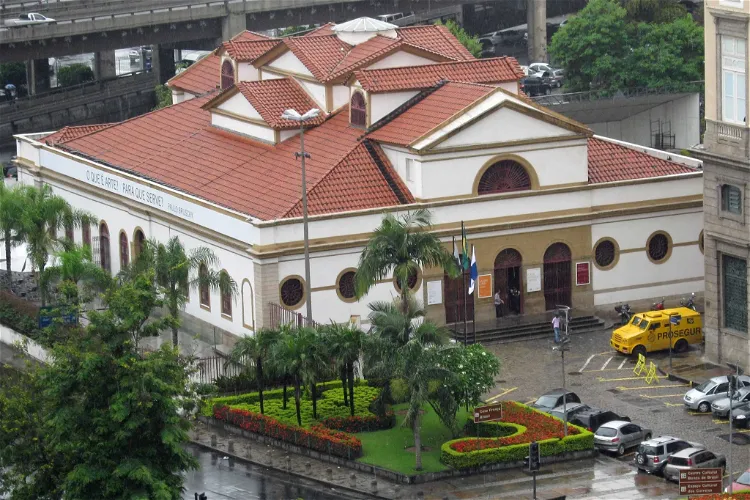
Casa França-Brasil
Rio de JaneiroCasa França-Brasil is a cultural center situated in the historic heart of Rio de Janeiro, Brazil. This historic property has been repurposed and now serves as a hub for cultural activities. It is a national cultural heritage site, recognized by the National Historical and Artistic Heritage Institute (IPHAN).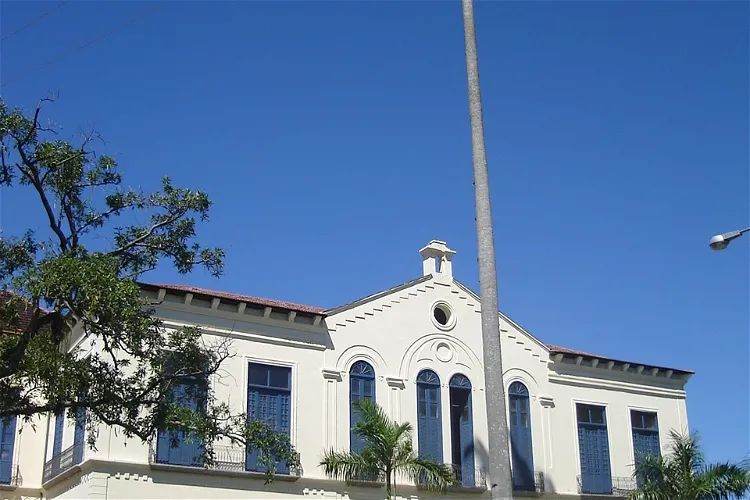
Écomusée du Quarteirão cultural do Matadouro
Rio de JaneiroThe Ecomuseu Comunitário de Santa Cruz is an ecomuseum situated in the historic block of the Matadouro de Santa Cruz, in the Santa Cruz neighborhood of Rio de Janeiro. This location is steeped in history and offers a unique insight into the local culture and heritage.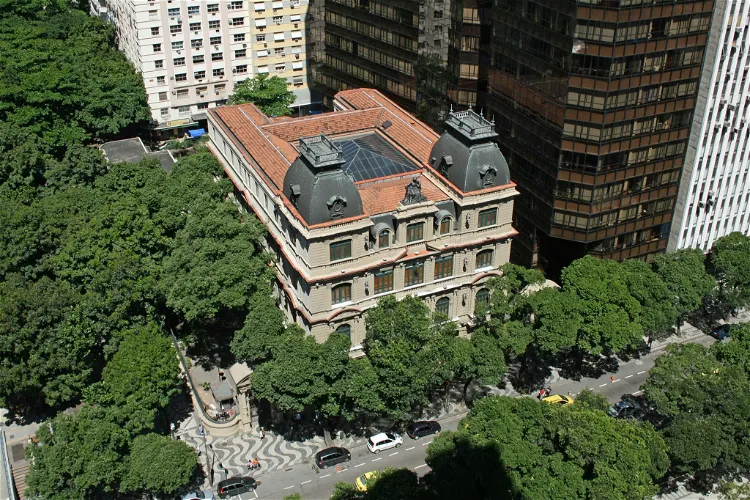
Federal Justice Cultural Center
Rio de JaneiroThe former home of the federal court has been transformed into a cultural centre - check out their exhibitions and events.
Casa de Vidro
São PauloThe Casa de Vidro, or Glass House, is a significant architectural landmark in São Paulo, Brazil. It was designed by the renowned Italian architect Lina Bo Bardi and was constructed between the years 1950 and 1951. The house is located in the Morumbi region of São Paulo, a neighborhood known for its lush greenery and upscale residences.
Museu Abelardo Rodrigues
SalvadorThe Museu Abelardo Rodrigues is a Brazilian museum that is situated in the Solar Ferrão, in the historic district of Pelourinho, Salvador. This location is not only significant for its historical and architectural value but also for its cultural significance as it is in the heart of Salvador's old town.
Museu do Folclore de São José dos Campos
São José dos CamposThe Museu do Folclore de São José dos Campos is situated within the Parque Municipal Roberto Burle Marx, commonly referred to as Parque da Cidade. This park is recognized as a preservation zone due to its rich historical, cultural, and architectural value. The museum, which is part of the Fundação Cultural Cassiano Ricardo (FCCR) and managed by the Centro de Estudos da Cultural Popular (CECP), was established in 1987 to highlight and preserve the region's folklore.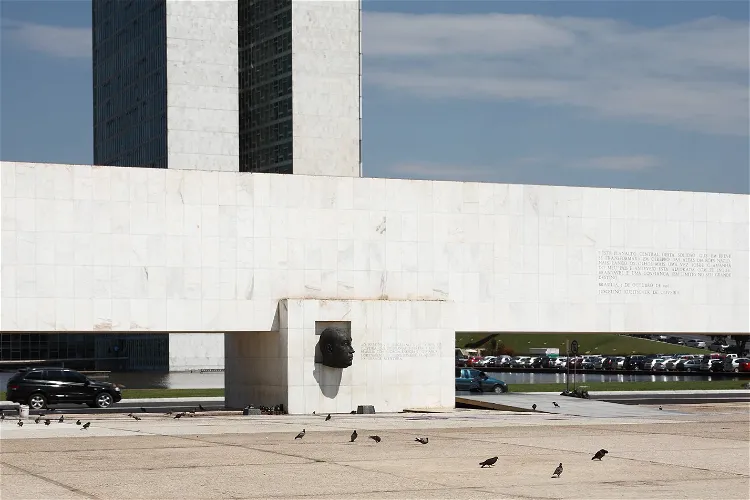
City Museum
BrasíliaThe City Museum, also known as the Historical Museum of Brasília, holds the distinction of being the oldest museum in the federal capital. It was inaugurated on the same day as the city itself, marking it as a significant historical landmark.
Museu de Arte do Espírito Santo
VitóriaThe Museu de Arte do Espírito Santo Dionísio Del Santo, located in Vitória, Espírito Santo, is a significant cultural institution in the region. It was inaugurated on December 18, 1998, and has since been a hub for national and international exhibitions.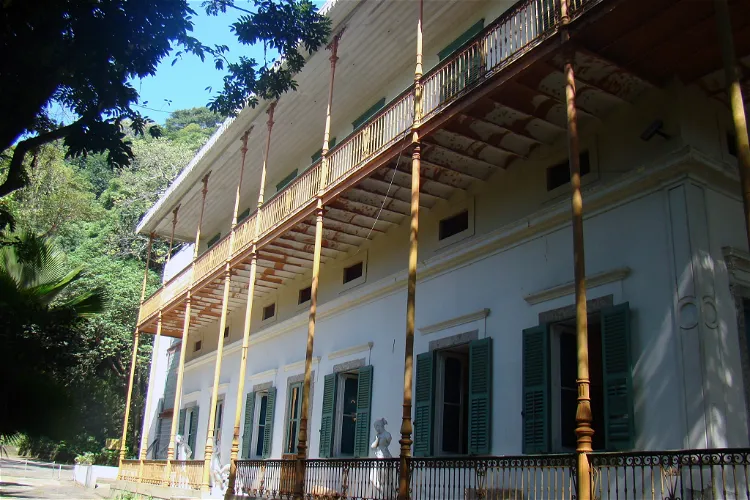
Museu Histórico da Cidade
Rio de JaneiroThe Museu Histórico da Cidade do Rio de Janeiro, also known as Museu da Cidade, is a museum located in Rio de Janeiro, Brazil. It was established in 1934 and is housed in a complex of several buildings, including two 19th-century structures dedicated to exhibitions. The museum complex is situated in the municipal natural park Parque da Cidade in the Gávea neighborhood.
Kubitschek Residence Museum
DiamantinaThe Kubitschek Residence Museum is a unique museum house situated on the picturesque shore of Lake Pampulha in Belo Horizonte, Minas Gerais, Brazil. This location offers visitors a chance to explore the museum while also enjoying the beautiful surroundings of the lake. The museum is easily accessible and provides a unique insight into the life and times of Juscelino Kubitschek.
Museu Histórico Abílio Barreto
Belo HorizonteThe Museu Histórico Abílio Barreto (MHAB) is a significant cultural institution in Belo Horizonte. It is part of the Municipal Culture Foundation of the City Hall of Belo Horizonte, which is responsible for promoting and preserving the city's cultural heritage. The museum is located in the Cidade Jardim neighborhood, making it easily accessible for tourists visiting the city.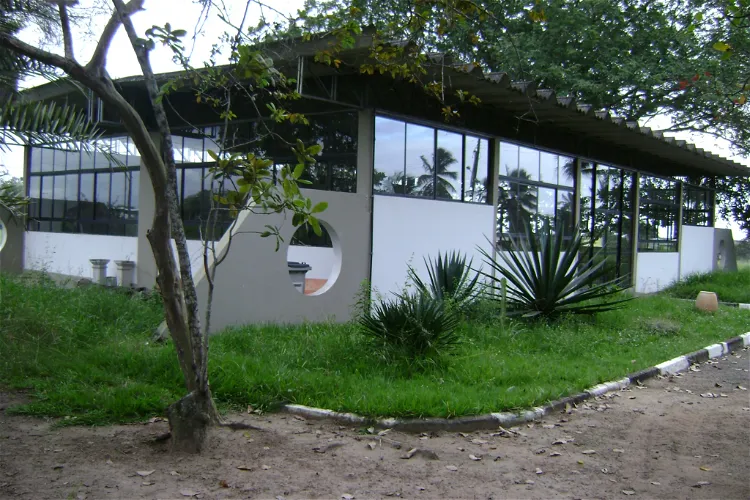
Museum House of the Wild
Feira de SantanaThe Museu Casa do Sertão is situated within the campus of the State University of Feira de Santana (UEFS). This museum, which is part of the university, was inaugurated on June 30, 1978. It's a significant part of the university's cultural and historical landscape, offering visitors a unique insight into the region's past.
Historic Train Station
LouveiraThe Louveira Train Station holds a significant place in history as it was the first railway station built and inaugurated by the Companhia Paulista de Estradas de Ferro (CPEF). This event took place on March 31, 1872, marking a milestone in the development of the railway system in the region.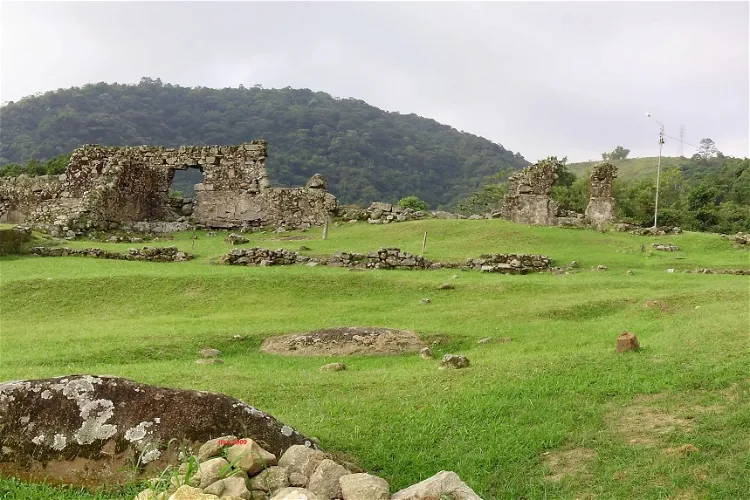
Engenho dos Erasmos
SantosEngenho dos Erasmos, also known as Engenho São Jorge dos Erasmos, is a historical site located on the island of São Vicente in Brazil. This former sugar cane facility was built around 1534 and was predominantly owned by the Schetz family throughout its operational years. Today, it stands as a ruin and has been declared a national monument, attracting tourists from all over the world.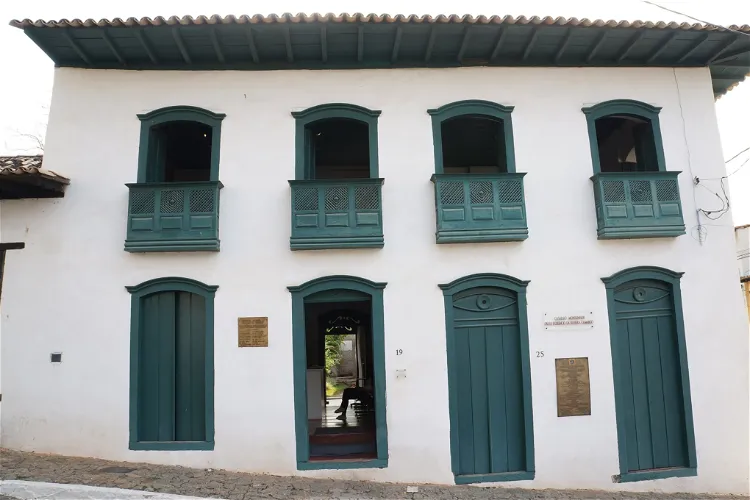
Casarão Monsenhor Paulo Florêncio da Silveira Camargo
Santana de ParnaíbaConstructed in the 18th century, during the height of the Bandeirismo period, the Casarão Monsenhor Paulo Florêncio da Silveira Camargo stands as a testament to the architectural style of the era. It is one of the few remaining Bandeirista houses and uniquely, it is the only one located in an urban area.
Craft Center Master Dezinho
TeresinaThe Central de Artesanato Mestre Dezinho in Teresina is a hub for the creation, crafting, and selling of art from the Brazilian state of Piauí. This space is dedicated to showcasing the local artistry and providing a platform for artists to sell their work, making it a great place for tourists to experience the local culture and purchase unique souvenirs.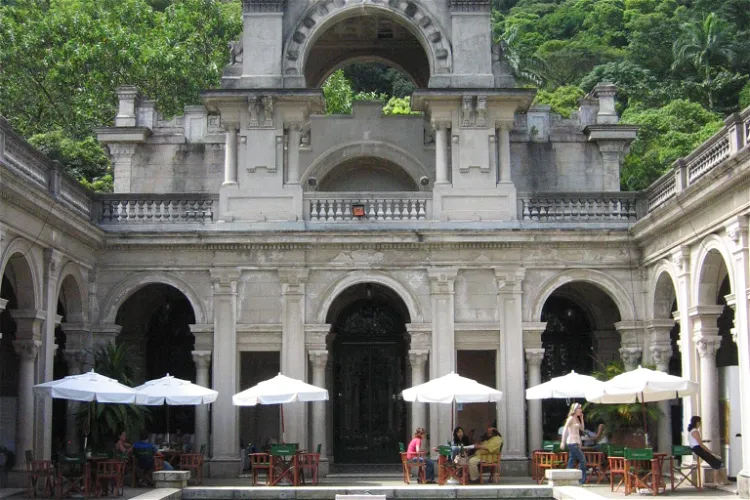
Parque Lage
Rio de JaneiroParque Lage, also known as El Parque Henrique Lage, is a public park situated in Rio de Janeiro. It is located at the foot of the Corcovado, on Jardín Botánico street. This location offers visitors a unique opportunity to enjoy the natural beauty of the park while being in close proximity to the city's attractions.
Rampa, Natal
NatalThe Rampa complex is currently under renovation to become the Rampa Cultural Complex, which will include a museum and the Aviator Memorial. The theme of these attractions will be Natal's participation in World War II. Once completed, the complex will have the necessary infrastructure to host various activities and cultural and popular institutions. This information could be useful for tourists interested in cultural activities and learning about Natal's history.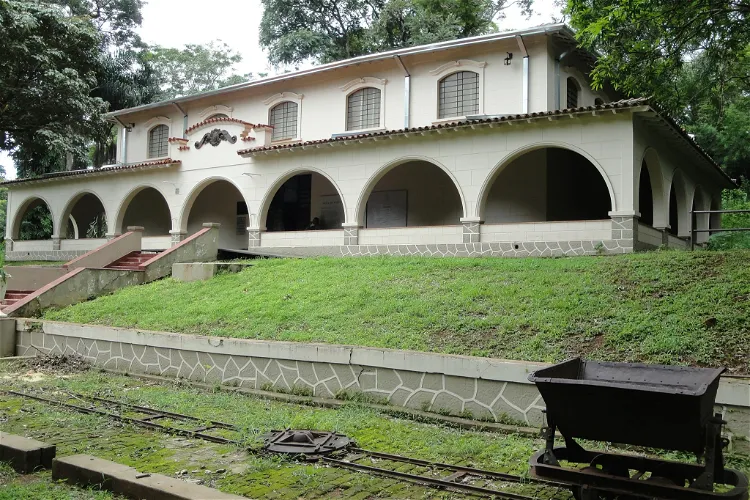
Museo del Café Francisco Schmidt
Ribeirão PretoThe Museu do Café Francisco Schmidt is located in the city of Ribeirão Preto, in the interior of the state of São Paulo, southeastern Brazil. The museum is dedicated to the history of coffee cultivation in this region and is named after Francisco Schmidt, the former owner of the estate where the museum is situated. This museum provides a unique insight into the rich history of coffee cultivation in Brazil, making it a fascinating destination for those interested in learning more about this aspect of Brazilian culture.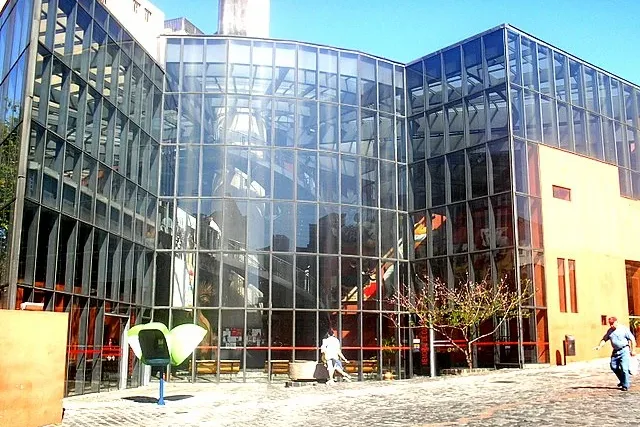
Memorial de Curitiba
CuritibaThe Memorial de Curitiba is a cultural hub located in the historic center of Curitiba, the capital of the State of Paraná. This public space is dedicated to a variety of cultural activities, making it a vibrant spot for locals and tourists alike.- 105
Museu de Ciência e Técnica da Escola de Minas
Ouro PretoThe Museu de Ciência e Técnica da Escola de Minas is a significant landmark situated in the city of Ouro Preto, in the State of Minas Gerais, Brazil. This location is known for its rich history and cultural significance, making it an interesting destination for tourists. 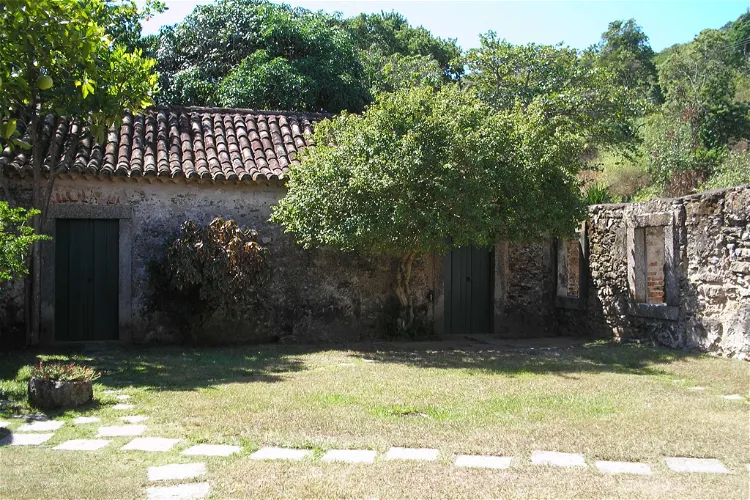
Archaeological Museum of Itaipu
NiteróiThe Archaeological Museum of Itaipu (MAI) is situated in the city of Itaipu, which is part of Niterói, in the state of Rio de Janeiro, Brazil. The museum is a unit linked to the Brazilian Institute of Museums, an organ of the Ministry of Culture. It started its activities on March 22, 1977.
Museu Monteiro Lobato
TaubatéThe Museu Monteiro Lobato is a public cultural institution, established by decree nº33909 on November 4, 1958. It is situated at the Sítio do Picapau Amarelo, in the Brazilian city of Taubaté, in the State of São Paulo. This location is significant as it is the birthplace and childhood home of the renowned writer Monteiro Lobato.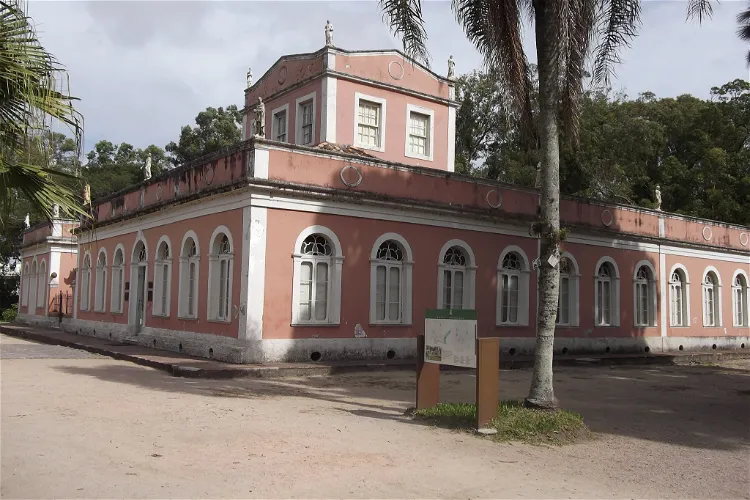
Museu da Baronesa
PelotasThe Museu da Baronesa is housed in an old residence built in 1863, in the former Chácara dos Barões de Três Serros. This historic building adds to the museum's charm and provides a fitting backdrop for the exhibits it contains.
Parque Histórico General Bento Gonçalves
CristalThe Parque Histórico General Bento Gonçalves spans an area of approximately 280 hectares. It features a native forest, ponds, fields and marshes, providing a diverse natural environment for visitors to explore. Additionally, the park also has space designated for camping.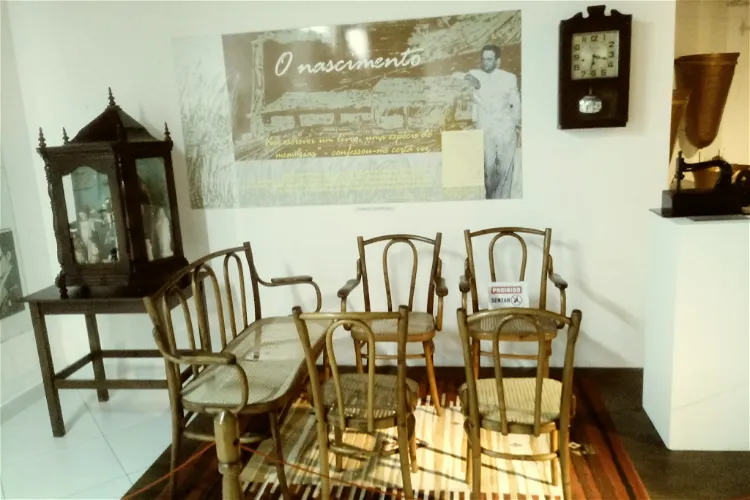
Museu José Lins do Rego
João PessoaThe Museu José Lins do Rego is situated in the Espaço Cultural José Lins do Rego, in João Pessoa, Paraíba. This location is a cultural hub in the city, making it a convenient spot for tourists interested in exploring the local culture and history.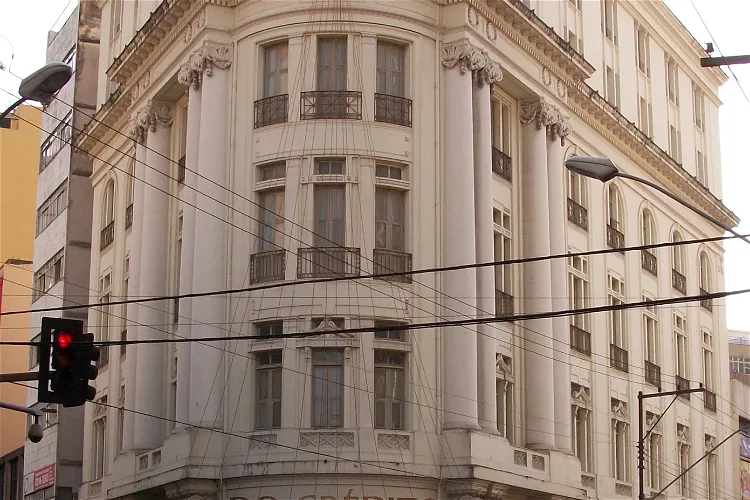
Museu do Crédito Real
Juiz de ForaThe Museu do Crédito Real is a Brazilian museum situated in the city of Juiz de Fora, in the state of Minas Gerais. It was established in 1964 by José Tostes de Alvarenga Filho, who was the president of the bank at the time. This museum is a testament to the rich history of banking in Brazil and offers a unique insight into the evolution of the financial sector in the country.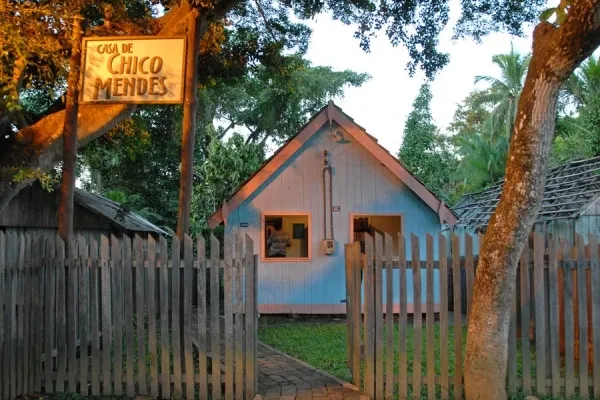
Casa de Chico Mendes
Pedro LeopoldoThe Casa de Chico Mendes is a significant historical site as it was the home of Chico Mendes, a renowned environmentalist and rubber tapper, who was assassinated here in 1988. This house is a poignant reminder of his life and struggle for the preservation of the Amazon rainforest.
Museum of Sacred Art of São Paulo
São PauloThe Museum of Sacred Art of São Paulo is a unique institution dedicated to the collection and display of sacred art from Brazil. It is situated in the Luz neighborhood of São Paulo, within the left wing of the Luz Monastery. This location not only provides a historical context for the artworks but also adds to the overall cultural experience of visiting the museum.
Museu Histórico Municipal de Bauru
BauruThe Museu Histórico Municipal de Bauru is a repository of a wide range of items that reflect the history of Bauru. These include photos, newspapers, magazines, documents, texts, pieces of furniture, objects, machines, tools, and equipment. This diverse collection provides a comprehensive insight into the city's past, making it a valuable resource for those interested in understanding Bauru's history.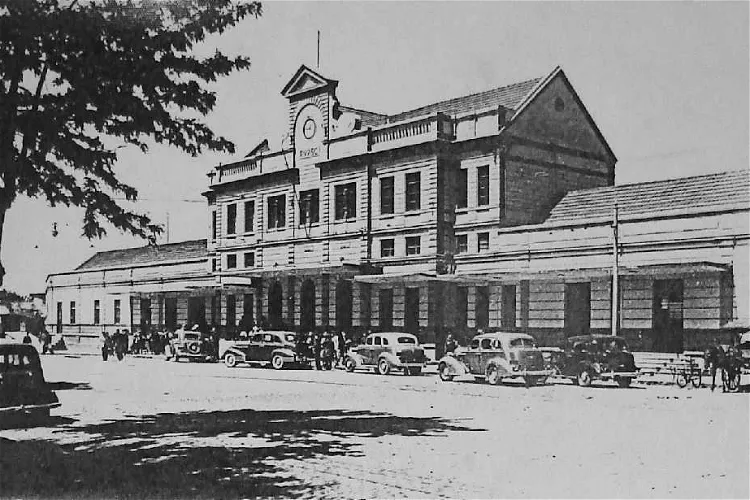
Railway Museum
CuritibaThe Railway Museum of Curitiba is housed in the historic Curitiba Railway Station, a building that was inaugurated in 1885. This location adds a layer of historical significance to the museum, as it was once a part of the Curitiba Paranaguá Railway until 1972.
Museum of the Inconfidência
Ouro PretoThe Museu da Inconfidência, also known as the Museum of the Inconfidência, is a historical institution dedicated to commemorating those who lost their lives in the Inconfidência Mineira, a failed rebellion movement for Brazilian independence from Portugal. This museum serves as a testament to the struggle for independence and the sacrifices made by those who fought for it.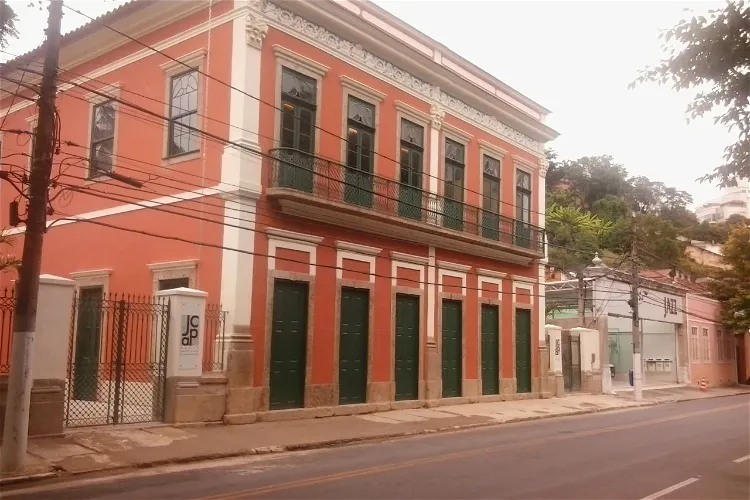
Janete Costa Museum of Popular Art
NiteróiThe Janete Costa Museum of Popular Art is housed in a historic mansion that dates back to 1892. This museum is located in the Ingá neighborhood of Niterói, a city in the state of Rio de Janeiro, Brazil. The location itself adds a touch of historical charm to the museum, making it an interesting destination for tourists who appreciate both art and history.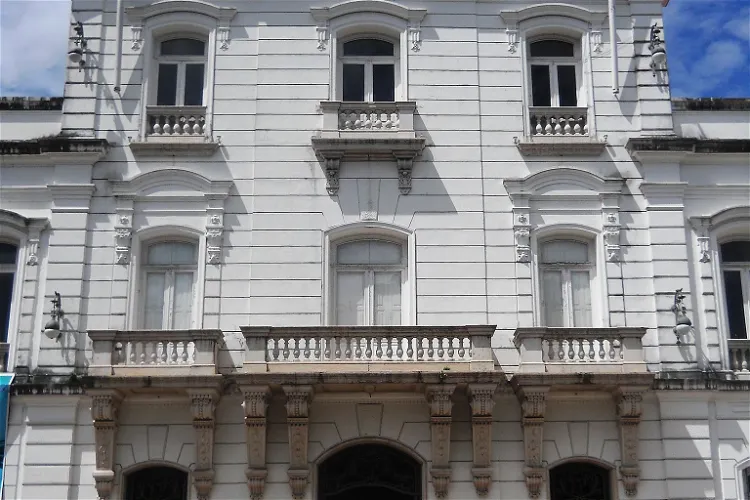
Pará State Museum
BelémThe Pará State Museum, also known as the Historical Museum of the State of Pará (MHEP), is a government-run institution established in 1981. It is situated in the Lauro Sodré Palace in the Old City district of Belém, in the state of Pará. The museum is known for its diverse exhibitions of contemporary artists.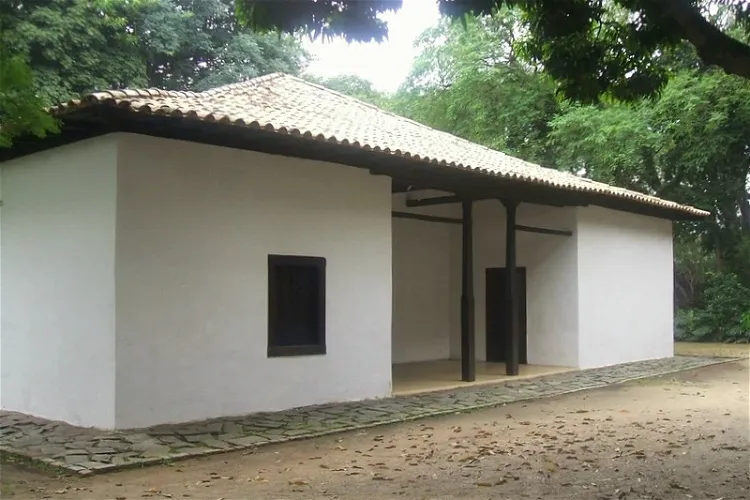
Casa do Bandeirante (Butantã)
São PauloThe Butantã House, also known as the Bandeirante's House, is a significant historical site located in the Butantã neighborhood of São Paulo. This building, constructed in the Bandeirista style, dates back to the Brazilian colonial period and serves as a representation of the typical rural dwelling models of São Paulo during that era.
Gold Museum
SabaráThe Gold Museum is housed in a 17th-century house, showcasing architecture from the colonial period. This adds a unique historical charm to the museum, making it not just a place to view artifacts, but also a piece of history itself.
Cora Coralina House
GoiásThe Cora Coralina House Museum is a significant cultural institution in Brazil. It is situated in the city of Goiás, alongside the Red River. The museum's primary mission is to preserve and promote the work of the renowned Brazilian poetess, Cora Coralina. This location offers a unique opportunity for tourists to delve into the life and works of this influential literary figure.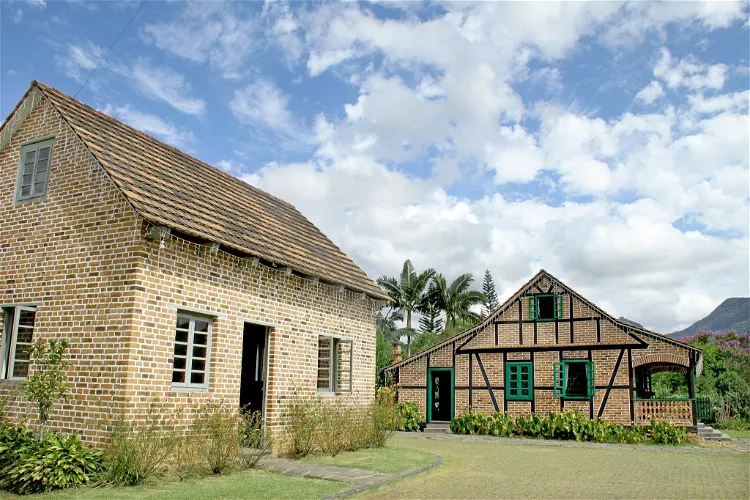
Immigrant House Museum Carl Weege
PomerodeThe Immigrant House Museum Carl Weege is a significant cultural site located in the city of Pomerode, Santa Catarina, Brazil. It offers visitors a unique opportunity to delve into the history and heritage of the region.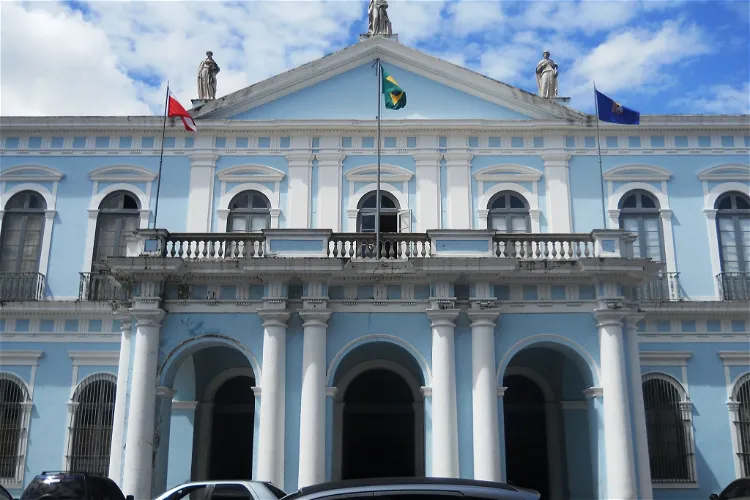
Antônio Lemos Palace
BelémThe Antônio Lemos Palace, also known as the Belém Art Museum, is a multifunctional building that serves as a public building, palace, museum, and city hall. It was built in 1860 by José da Gama Abreu during the rubber cycle, a period of economic boom in the region. This historical building offers a glimpse into the rich history and architectural style of the period.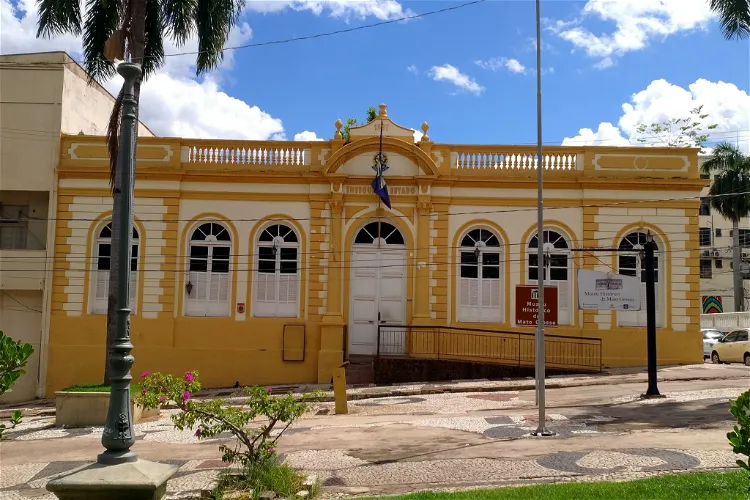
Mato Grosso History Museum
CuiabáThe Mato Grosso History Museum is situated in the city of Cuiabá. The building that houses the museum was originally constructed to serve as the Provincial Treasury of the State. This historical building adds to the charm and significance of the museum, making it a point of interest for tourists visiting the city.
Conde dos Arcos Palace
GoiásThe Conde dos Arcos Palace is a significant historical site located in the City of Goiás. This palace was the former seat of the government of the state of Goiás, making it a place of great historical importance. Visitors can explore the palace and learn about its role in the governance of the state.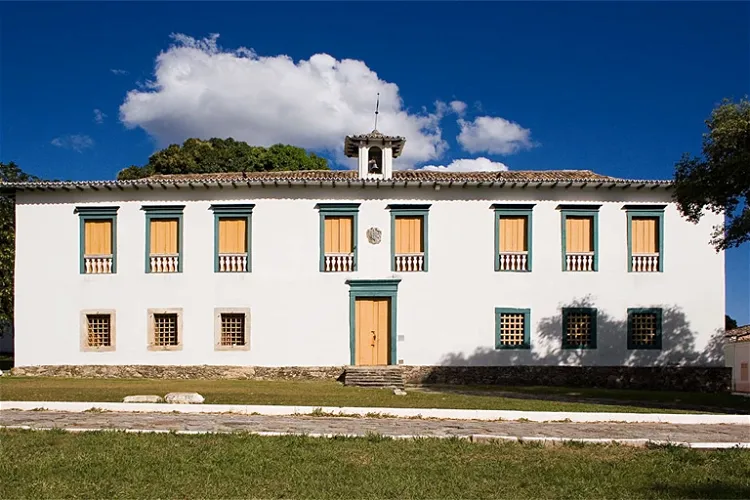
Museu das Bandeiras
GoiásThe Museu das Bandeiras is situated in the City of Goiás, which is approximately 128 kilometers away from Goiânia, the capital of the state of Goiás. This location makes it a feasible day trip for those staying in the capital city.
Divine museum - Old Town Hall and Chain
PirenópolisThe Casa de Câmara e Cadeia de Pirenópolis, located in the city of the same name, holds historical significance as it was the first jail in the state of Goiás. Constructed in 1733, it is situated in the Largo da Matriz de Pirenópolis. This historical site provides a glimpse into the past, offering visitors an understanding of the region's history and its judicial system.
Living Museum of Memory Candanga
Núcleo BandeiranteThe Living Museum of Memory Candanga is housed in the facilities of the now-defunct Juscelino Kubitschek de Oliveira Hospital (HJKO), the first hospital built in the new Federal District. The museum is conveniently located on the banks of the BR-040, near Núcleo Bandeirante, formerly known as the Free City, and Candangolândia, the former headquarters of Novacap. This location provides easy access for visitors and offers a glimpse into the history of the region.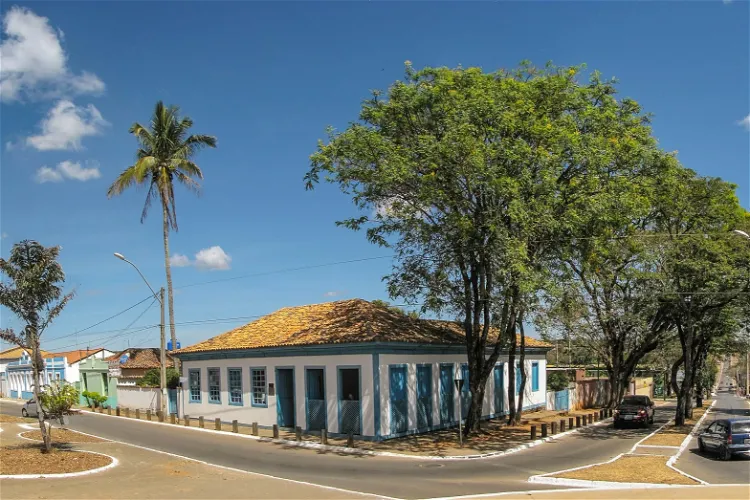
Museu Histórico e Artístico de Planaltina
PlanaltinaThe Museu Histórico e Artístico de Planaltina is a significant cultural institution in Brazil, located in Planaltina, within the Federal District. The museum was constructed between the 19th and 20th centuries by Afonso Coelho da Silva Campos and was officially opened to the public on April 22, 1974. It has been recognized as a National Historic Heritage site since 1987, further emphasizing its cultural and historical importance.
Jose Antonio Pereira Museum
Campo GrandeThe José Antônio Pereira Museum is situated in the city of Campo Grande, in the state of Mato Grosso do Sul. This location makes it easily accessible for tourists visiting the city or the state.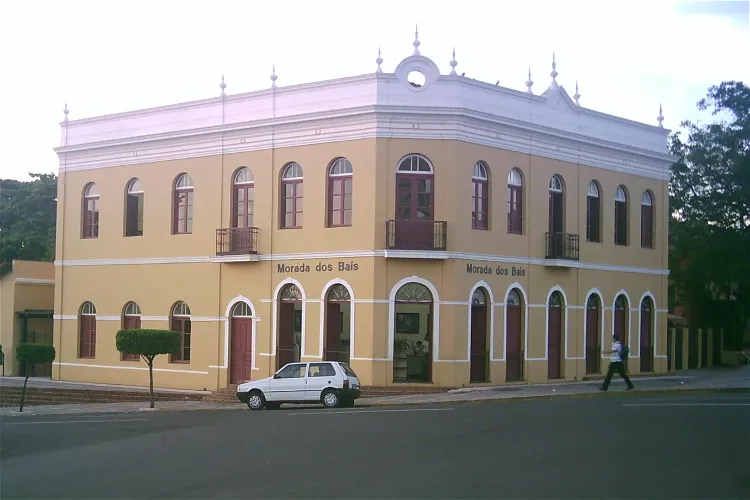
Morada dos Baís
Campo GrandeMorada dos Baís is a cultural center situated in Campo Grande, Mato Grosso do Sul, Brazil. This historic building, which was previously known as Pensão Pimentel, now serves as a hub for cultural activities and events. It is located at Av. Noroeste, number 5140, in the Centro neighborhood.
Goiano Museum Zoroastro Artiaga Teacher
GoiâniaThe Zoroastro Artiaga Museum, located in Goiânia, Brazil, is a cultural institution founded in 1946. The museum's collection includes historical documents, ancient utensils, objects related to the Central Brazilian Indians, and artistic pieces. These diverse collections provide a comprehensive insight into the region's rich history and culture.- 133
Museu Fragmentos do Tempo
MataThe Museu Fragmentos do Tempo is situated in the rural area of São José do Louro, which is approximately 5km away from the city center of Mata, in the state of Rio Grande do Sul, Brazil. This location provides a serene and peaceful environment for visitors to explore the museum and its surroundings. 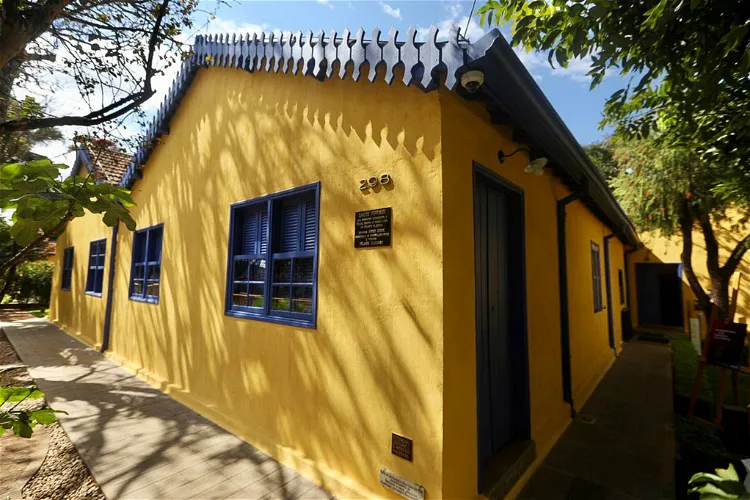
Museu Casa de Portinari
BrodowskiThe Museu Casa de Portinari is situated in the city of Brodowski, in the state of São Paulo. This is the house where the renowned artist Candido Portinari spent his childhood and youth. It is a place where he often returned to spend time with his family and friends.- 135
Museu Histórico Farroupilha
PiratiniThe Farroupilha Historical Museum, located in the city of Piratini in Rio Grande do Sul, Brazil, was established on February 11, 1953, during the tenure of Ernesto Dornelles. This museum is a significant cultural institution that provides insights into the rich history of the region. 
Museu de Arte de Londrina
LondrinaThe Museu de Arte de Londrina is a Brazilian museum situated in the city of Londrina, in the state of Paraná. It is a significant cultural institution in the region, showcasing a variety of art pieces from different periods and styles.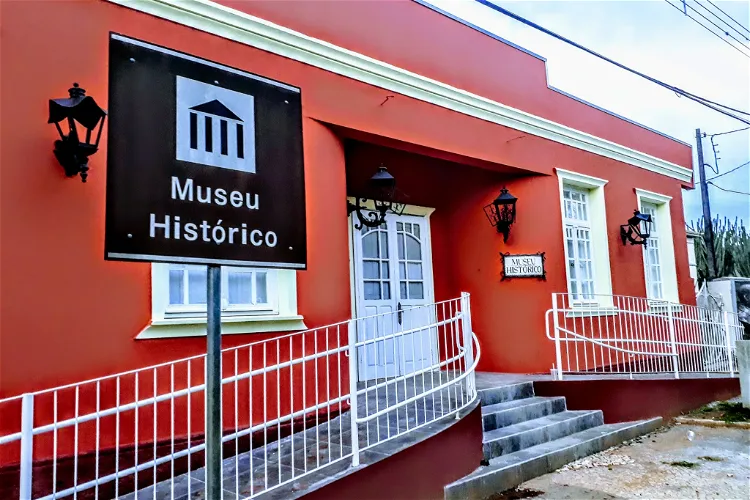
Museu Histórico Desembargador Edmundo Mercer Júnior
TibagiThe Museu Histórico Desembargador Edmundo Mercer Júnior, also known as the Museu do Garimpo, is a historical museum located in the municipality of Tibagi, in the state of Paraná. The museum's primary objective is to disseminate the history of the municipality and the mining activity in the region. It also contributes to historical and documentary studies and research, making it a valuable resource for those interested in the history of the region.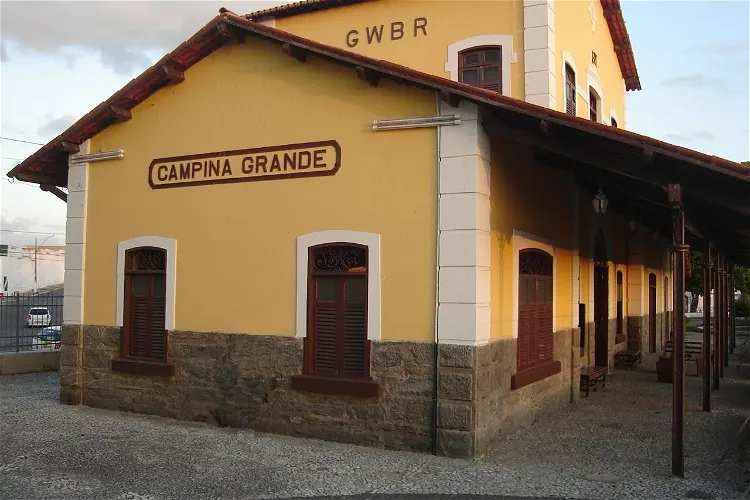
Cotton Museum
Campina GrandeThe Cotton Museum, officially known as the Museum of History and Technology of Cotton, is situated in the city of Campina Grande in the state of Paraíba. The museum's primary objective is to preserve and showcase the rich history and culture of cotton in the state. It is an ideal place for tourists who are interested in learning about the historical significance of cotton in the region.
Museu Histórico Pedagógico Conselheiro Rodrigues Alves
GuaratinguetáThe Museu Histórico e Pedagógico Conselheiro Rodrigues Alves is a historical and educational museum located in Guaratinguetá, São Paulo. The museum is named after Francisco de Paula Rodrigues Alves, a former president of Brazil. The museum was established in 1956 and has since been a significant cultural and historical site in the region.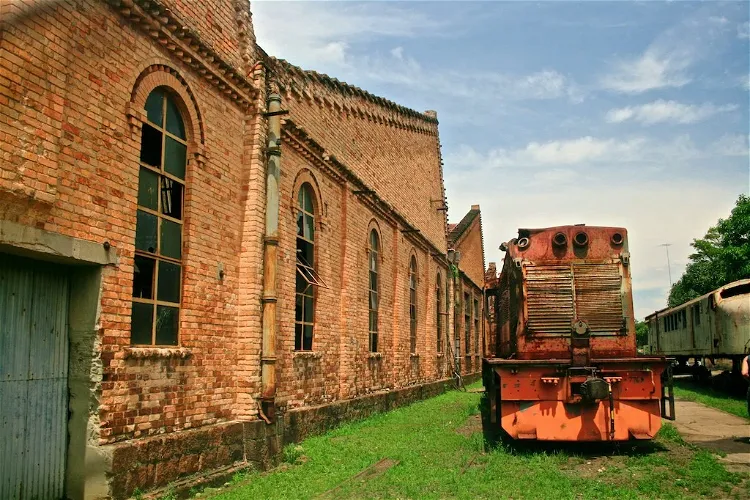
Companhia Paulista Museum
JundiaíThe Companhia Paulista Museum, which was previously known as the Barão de Mauá Railway Museum, was inaugurated on March 9, 1979. It is located in the city of Jundiaí, in the state of São Paulo, Brazil. This museum is a significant historical site that offers a glimpse into the country's railway history.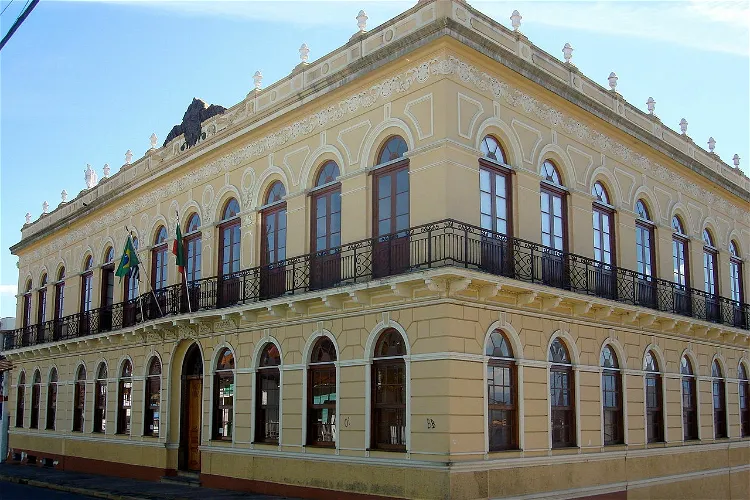
Museu Histórico Pedagógico Dom Pedro I e Dona Leopoldina
PindamonhangabaThe Museu Histórico Pedagógico Dom Pedro I e Dona Leopoldina is a historical and educational museum situated in Pindamonhangaba. It was established in the year 1957 and is housed in the Palacete Palmeira. The museum is dedicated to preserving and showcasing historical objects, primarily related to the territorial and political evolution of São Paulo.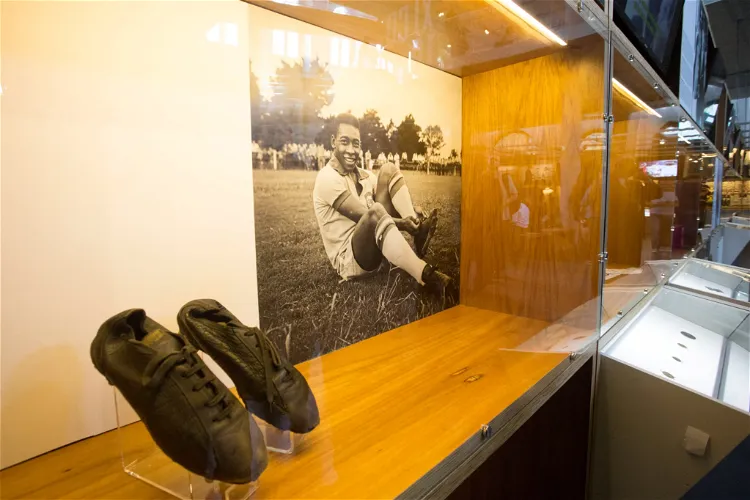
Pelé Museum
SantosThe Pelé Museum, located in the city of Santos, is a tribute to the illustrious career of the legendary footballer, Pelé. It provides an in-depth look into his life and achievements, making it a significant destination for football enthusiasts and history buffs alike.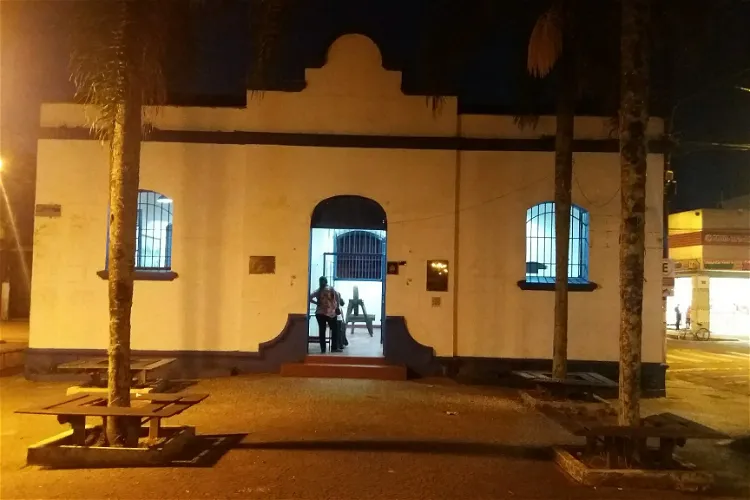
Washington de Oliveira Historical Museum
UbatubaThe Washington de Oliveira Historical Museum, also known as the Ubatuba Historical Museum, is situated in Ubatuba. The museum's primary mission is to preserve and showcase the rich history of this São Paulo municipality. It provides an opportunity for visitors to delve into the past and understand the cultural and historical significance of Ubatuba.
Fundação Pinacoteca Benedicto Calixto
SantosThe Fundação Pinacoteca Benedicto Calixto is situated in the city of Santos, within a historic mansion known as the white mansion in Boqueirão. This mansion is a significant representation of the coffee era in Brazil, providing visitors with a glimpse into the country's rich history and culture.
Museum Drover
CastroThe Museu do Tropeiro is situated in Castro, a city nestled in the interior of the state of Paraná. This location provides a unique cultural experience for tourists, as it is away from the bustling city life and offers a glimpse into the history and lifestyle of the region.
Parque Histórico de Carambeí
CarambeíThe Parque Histórico de Carambeí (PHC) is an open-air historical museum situated in the municipality of Carambeí, in the state of Paraná. The museum was inaugurated in 2011, during the Centenary of Dutch Immigration celebrations, and spans an impressive 100,000 square meters.
Estação Ferroviária de Joinville
JoinvilleThe Estação Ferroviária de Joinville, constructed in 1906, is a significant part of Brazil's railway heritage. It stands as a landmark in the process of industrialization and development of the municipality. Its Teutonic-Brazilian architecture and its close emotional connection with the Joinville society make it a representative cultural asset of the local culture and a tourist attraction.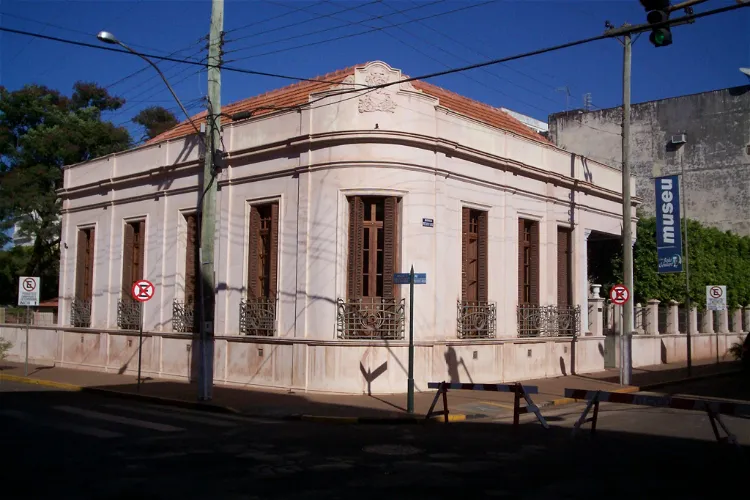
João Goulart's House
São BorjaThe João Goulart House, located in the city of São Borja in the state of Rio Grande do Sul, is a significant historical site. This mansion, built in 1927, was the childhood and youth residence of former President João Goulart. It offers a unique insight into the early life of one of Brazil's most influential figures.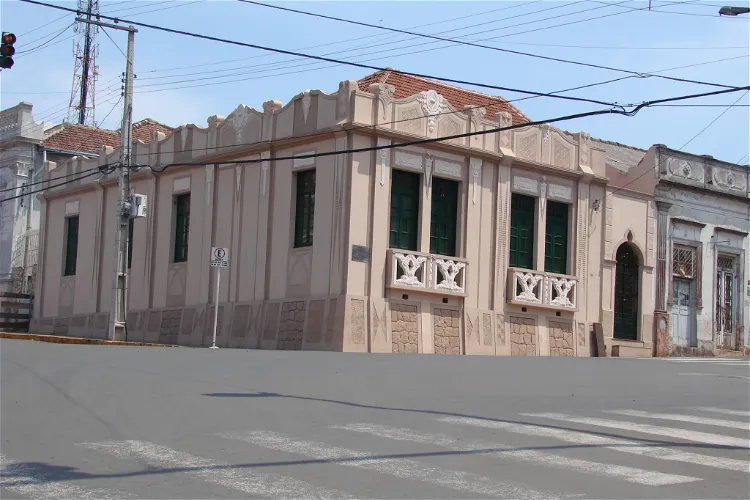
House Museum Érico Veríssimo
Cruz AltaThe House and Museum Érico Veríssimo, situated in the city of Cruz Alta in Rio Grande do Sul, offers visitors a unique opportunity to delve into the life of the renowned writer Érico Veríssimo. The museum houses a collection of his personal objects, books, photos, drafts, and original works, as well as videos about his life. This provides a comprehensive insight into the writer's life and work, making it a worthwhile visit for literature enthusiasts and history buffs alike.
Memorial Coluna Prestes
Santo ÂngeloThe Memorial Coluna Prestes is a museum situated in the city of Santo Ângelo, in the state of Rio Grande do Sul, Brazil. It is housed in the building of the city's old railway station since 1996. The museum is dedicated to one of the greatest revolutionary marches in history, the Coluna Prestes, led by Luís Carlos Prestes, which originated in Santo Ângelo.
Museu Ambiência Casa de Pedra
Caxias do SulThe Museu Ambiência Casa de Pedra is a museum situated in a historic house in the city of Caxias do Sul, Brazil. This museum is dedicated to recreating the domestic lifestyle of the early Italian settlers in the city. It is an interesting place to visit for those who are interested in history and culture.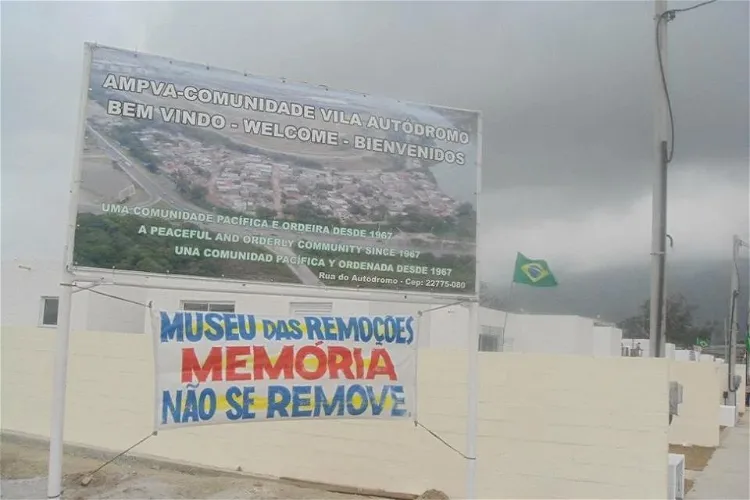
Museu das Remoções
Rio de JaneiroThe Museu das Remoções is an open-air community museum situated in Vila Autódromo, a community in the West Zone of Rio de Janeiro. This unique museum offers a different perspective on the city's history and culture, providing an immersive experience for visitors.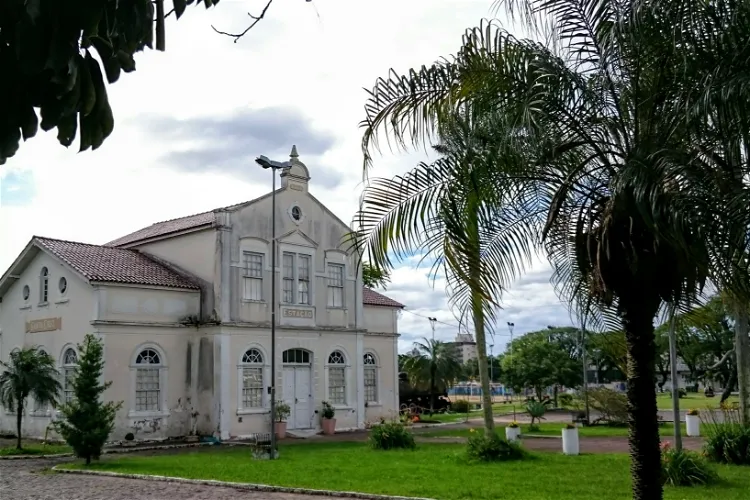
Centro de Cultura Jornalista Francisco José Frantz
Santa Cruz do SulThe Santa Cruz do Sul Station, located in the municipality of Santa Cruz do Sul, has a rich history dating back to its inauguration on November 15, 1905. The station was opened by the president of the province, Borges de Medeiros, and served as the terminal of the old Santa Cruz branch. This historical significance adds a layer of depth to the cultural experience of visiting the station.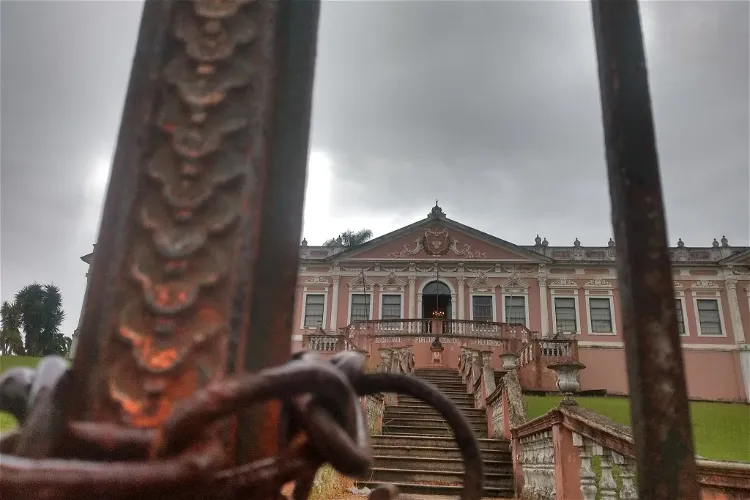
Dom Diogo de Souza Museum
BagéThe Dom Diogo de Souza Museum is situated in the municipality of Bagé, in the state of Rio Grande do Sul, Brazil. This location is significant as it provides a cultural and historical hub within the region, offering visitors a chance to delve into the rich history of Brazil, the state, and the city of Bagé.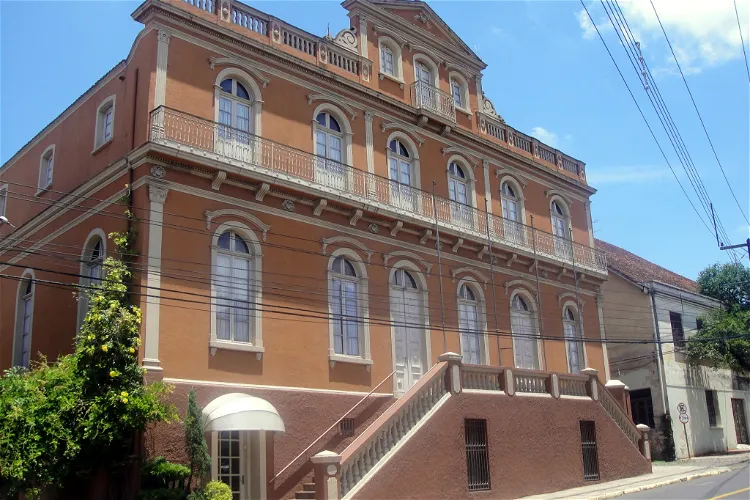
Ernesto Frederico Scheffel Foundation
Novo HamburgoThe city of Novo Hamburgo has its roots in the area of Hamburgerberg, now known as Hamburgo Velho. The city got its name, New Hamburg-Novo Hamburgo, from the English who were constructing a railway in 1876. This historical fact adds a unique aspect to the city's identity and is a point of interest for visitors.
Schmitt-Presser Museum
Novo HamburgoThe Schmitt-Presser Community Museum is a significant cultural institution located in the city of Novo Hamburgo, in the state of Rio Grande do Sul, Brazil. It offers visitors a unique insight into the history and culture of the region, making it a worthwhile destination for those interested in learning more about Brazil's rich heritage.
Museu da Cidade (Manaus)
ManausThe Museu da Cidade de Manaus, or the City Museum of Manaus, is a Brazilian museum situated in the heart of Manaus, the capital city of the Amazonas state. This museum offers a unique opportunity to delve into the rich history and culture of the region.
Chácara Lane - MCSP
São PauloChácara Lane is a historic site located in the heart of São Paulo at Rua da Consolação number 1,024. The land was originally owned by North American Presbyterian missionary George Chamberlain. However, it was Lanton Amnesley, the father of Chamberlain's wife Mary Annesley Chamberlain, who acquired the 14,800 square meter property between the years of 1880 and 1890.
Museum of Astronomy and Related Sciences
Rio de JaneiroThe Museum of Astronomy and Related Sciences (MAST) is a public institution run by the Brazilian Government. It is dedicated to the study and dissemination of the history of science and technology in Brazil. The museum also focuses on museology and science education. It is located at 586 General Bruce Street in the Imperial District of São Cristóvão, in the North Zone of Rio de Janeiro.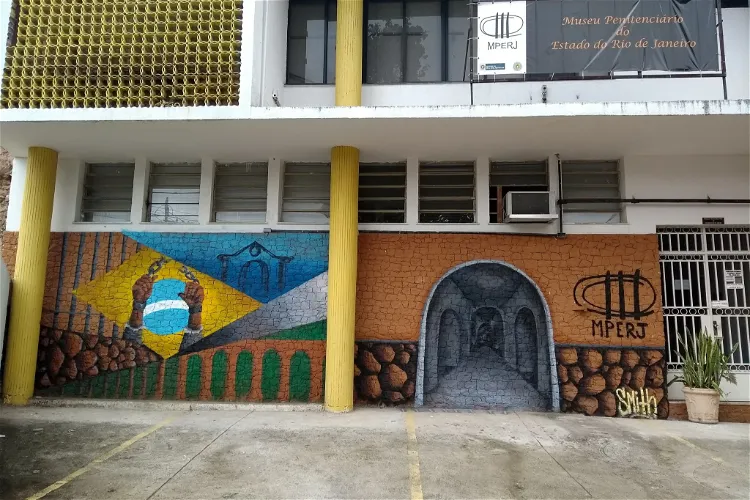
Museu Penitenciário do Estado do Rio de Janeiro
Rio de JaneiroOne of the unique aspects of the MPERJ is its display of illicit materials that have been seized from visitors and prisoners in prison units. These items range from cell phones to objects used for escape attempts. This exhibit provides a stark and tangible connection to the current reality of prisons, offering visitors a rare insight into the challenges and realities faced within these institutions.
Museum of the State Civil Police of Rio de Janeiro
Rio de JaneiroThe Civil Police Museum of Rio de Janeiro is a historical institution situated in the heart of Rio de Janeiro, Brazil. It offers a unique insight into the activities of the Civil Police throughout the history of Rio de Janeiro, dating back to the colonial era. The museum is housed in a French eclectic style building, constructed in 1910 by architect Heitor de Mello, adding an architectural charm to the historical significance of the museum.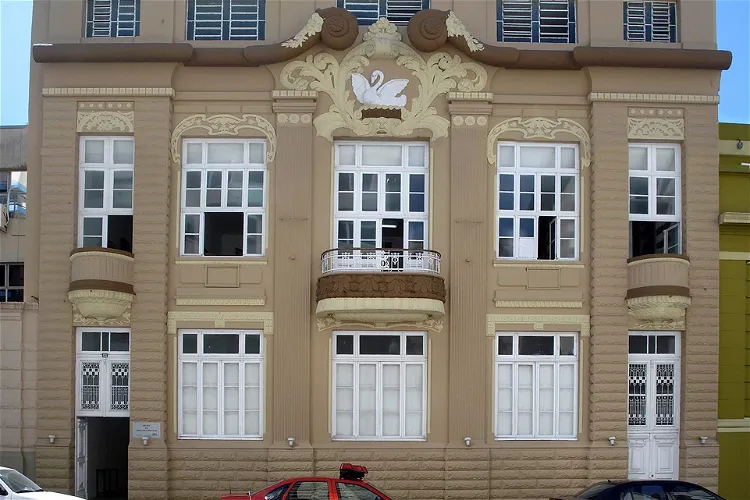
Museum of Military Brigade
Porto AlegreThe Military Brigade Museum is a significant cultural institution in Porto Alegre, Brazil. It is a place where visitors can learn about the history of the military brigade and its role in the region's history. The museum is housed in a historic building that dates back to 1910, adding to its cultural and historical significance.
UFRGS Museum
Porto AlegreThe UFRGS Museum, located in Porto Alegre, Brazil, is a part of the Federal University of Rio Grande do Sul. It is dedicated to museum activities within the fields of science, technology, history, art, and culture. This makes it a diverse and enriching destination for tourists interested in these areas.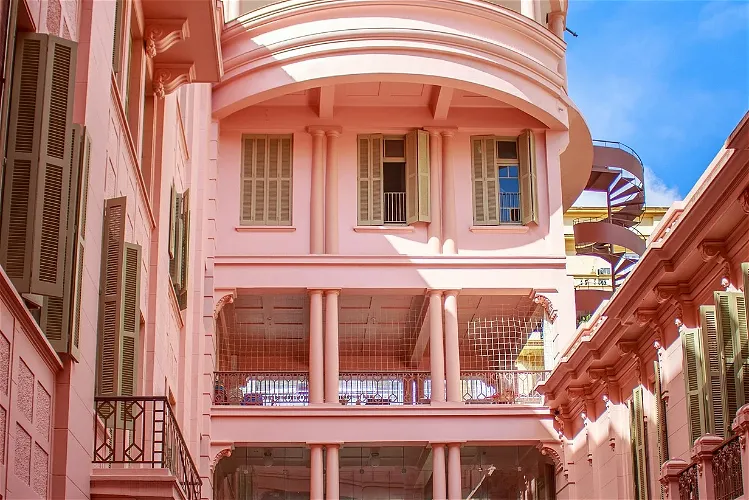
Casa de Cultura Mario Quintana
Porto AlegreThe Casa de Cultura Mario Quintana (CCMQ), originally known as the Hotel Majestic, is a historic Brazilian building that now serves as a cultural center in the city of Porto Alegre. It is considered one of the largest and best-equipped cultural centers in Brazil. The building's history as the Hotel Majestic adds to its charm and cultural significance.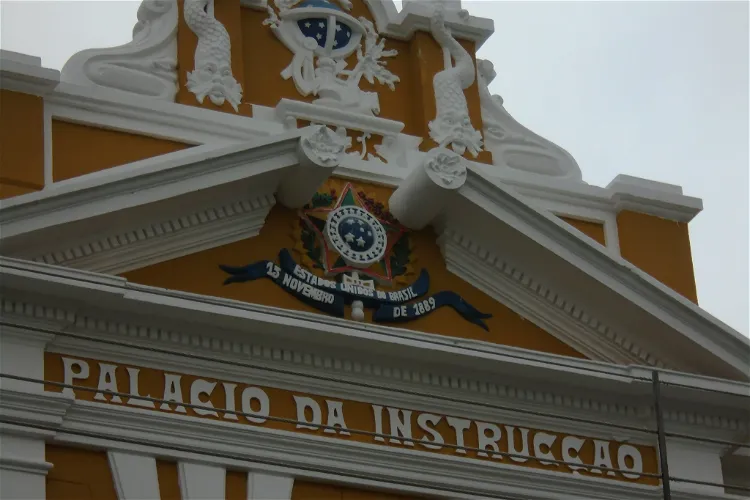
Instruction Palace
CuiabáThis beautiful yellow-painted edifice is designed in Baroque style. It houses a history museum and also a library.
Museum of Image and Sound of Belo Horizonte
Belo HorizonteThe Museum of Image and Sound of Belo Horizonte is situated on Álvares Cabral Avenue, in the Lourdes neighborhood. The museum is housed in an old residence that was built in the early 20th century. This location not only provides a unique setting for the museum's collections but also adds to the historical charm of the place. Visitors can appreciate the architecture of the building while exploring the museum's exhibits.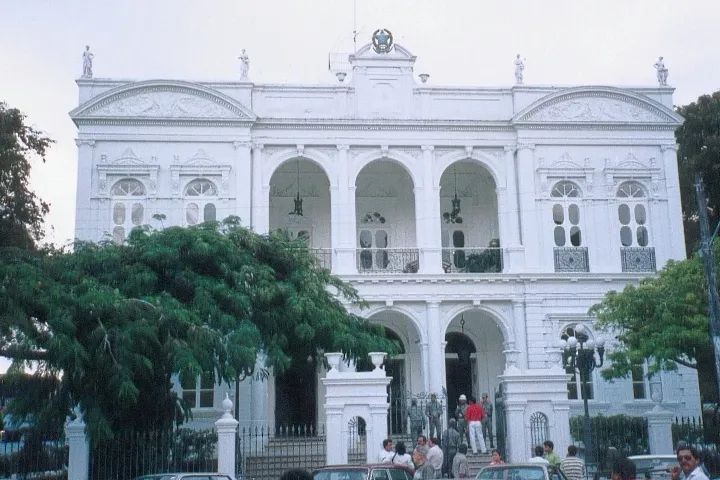
Floriano Peixoto Palace Museum
MaceióThe Floriano Peixoto Palace Museum is situated in the vibrant city of Maceió, in the state of Alagoas, Brazil. This location is easily accessible and offers a rich cultural experience for tourists visiting the area.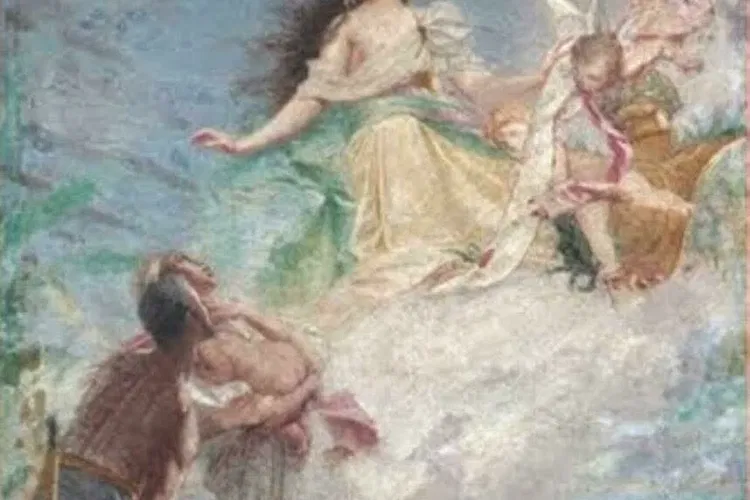
Museum of Sacred Art Pierre Chalita
MaceióThe Pierre Chalita Museum of Art (MAPC) is situated in Maceió, in the state of Alagoas, Brazil. This private institution is maintained by the Pierre Chalita Foundation, ensuring its continued operation and preservation of its collections.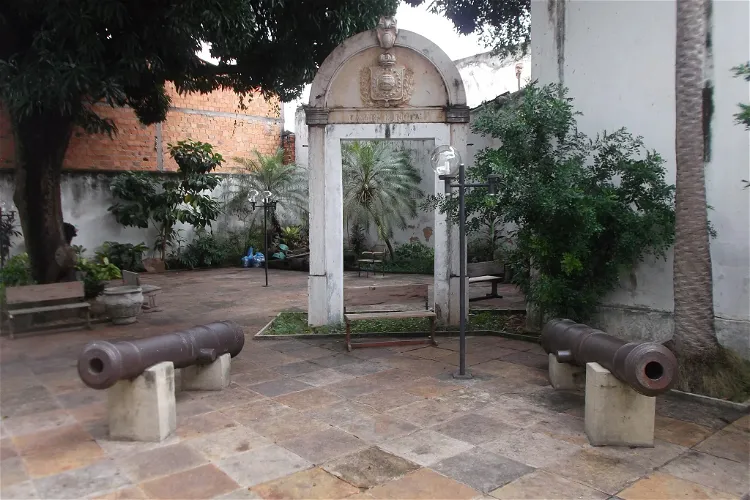
Museu do Piauí
TeresinaThe Museu do Piauí, located in Brazil, is a state-run institution. It was established and is currently maintained by the government of the state of Piauí. This museum offers a unique insight into the history and culture of the region, making it a worthwhile stop for tourists interested in learning more about the area.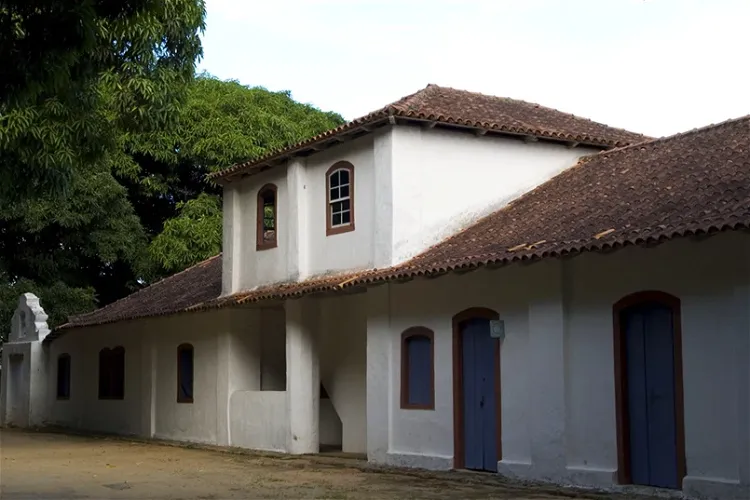
Monjardim Manor House
VitóriaThe Museu Solar Monjardim (MSM) is a public historical museum situated in the Solar Monjardim, in the Santa Cecília neighborhood of Vitória, Espírito Santo. The museum is currently managed by the Brazilian Institute of Museums (Ibram), a federal institution. This makes it an important site for those interested in Brazil's history and culture.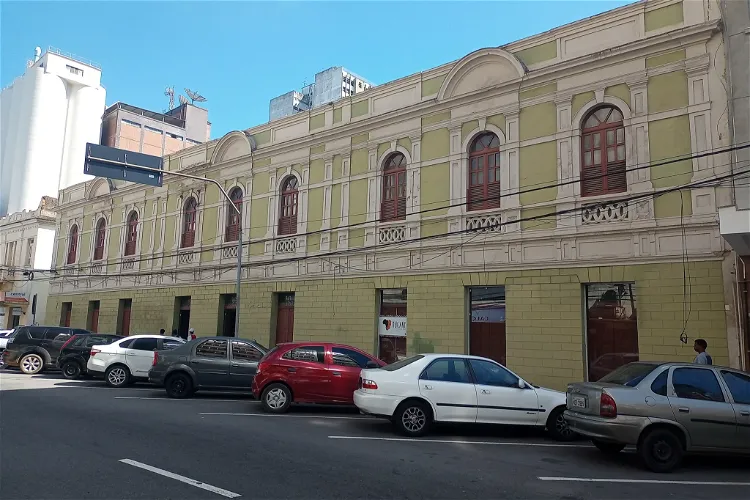
Museu Capixaba do Negro
VitóriaThe Museu Capixaba do Negro "Verônica da Pas", also known as Mucane, is a museum in Brazil. It is situated in the city of Vitória, in the state of Espírito Santo. This museum is a significant cultural institution that focuses on the diffusion and memory of the identity and culture of Afro-descendant peoples.
Museu Dom José
SobralThe Museu Diocesano Dom José, also known as Museu Dom José, is a museum situated in the city of Sobral, in the state of Ceará, Brazil. This museum is a significant cultural institution in the region, attracting a diverse range of visitors.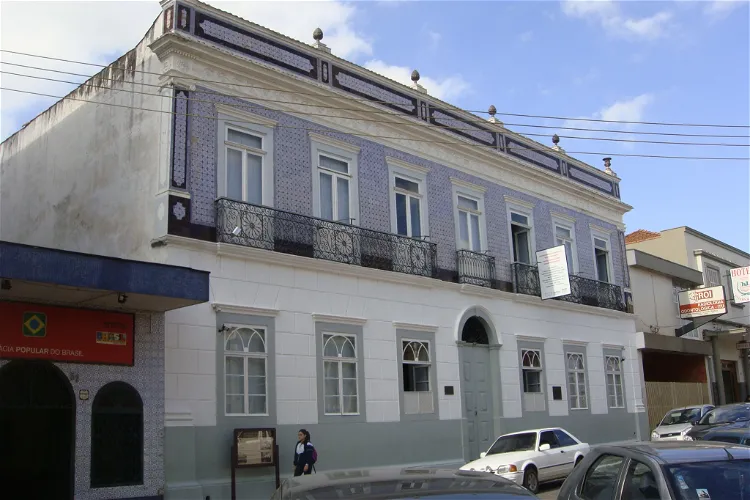
Museu Republicano de Itu
ItuThe Museu Republicano Convenção de Itu, also known as the Republican Museum, is a museum specializing in the period of the Old Republic. It is located in a townhouse in the city of Itu, where supporters of the overthrow of the Brazilian monarchical regime gathered in 1873. This meeting was known as the Convenção de Itu. The museum's focus is on the Brazilian republican movement and the first phase of the Brazilian Republic, with an emphasis on the perspective of São Paulo on the movement. It also deals with the history of Itu and the region, with an emphasis on the 19th century.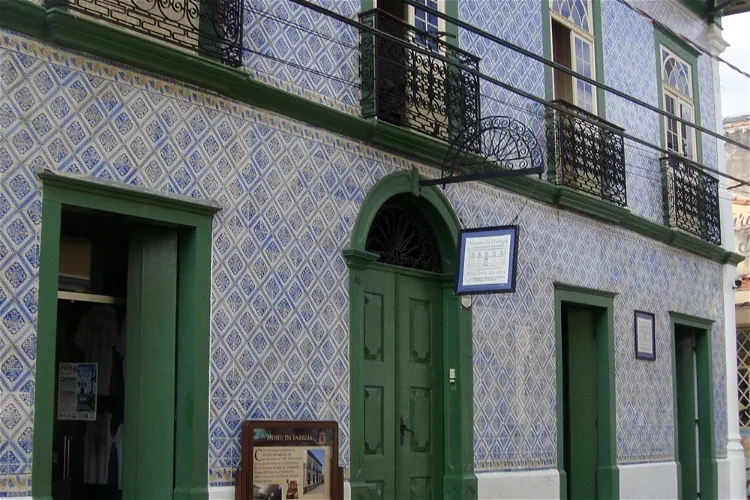
Museu da Energia de Itu
ItuThe Museu da Energia de Itu is situated in a large mansion from the 19th century in the city of Itu. This location adds a historical charm to the museum, making it an interesting place to visit for those interested in architecture and history.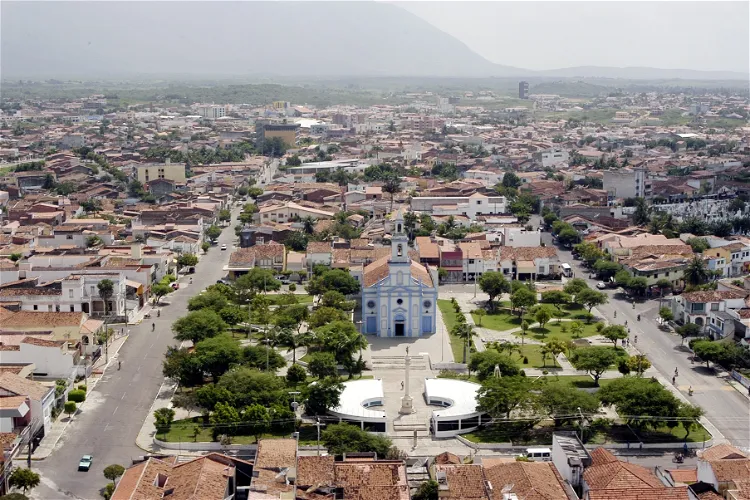
Eclipse Museum
SobralThe Eclipse Museum, located in the city of Sobral in Ceará, was inaugurated on May 29, 1999. This inauguration marked the eightieth anniversary of the confirmation of the Theory of Relativity. The museum is a significant institution in the city and holds a rich history.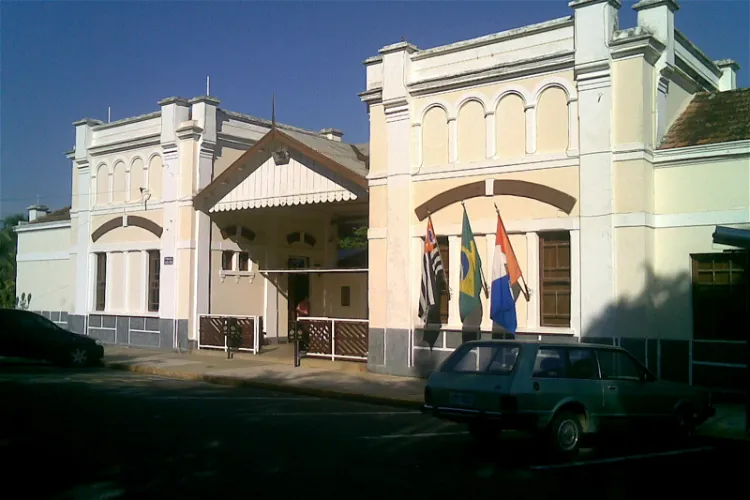
Museu Ferroviário de Indaiatuba
IndaiatubaThe Museu Ferroviário de Indaiatuba, or Indaiatuba Railway Museum, is situated in the former Indaiatuba Railway Station of the Ytuana Railway Company. This location is in the State of São Paulo, Brazil. The museum's location adds a historical context to the exhibits, as it is housed in a building that was once a bustling railway station.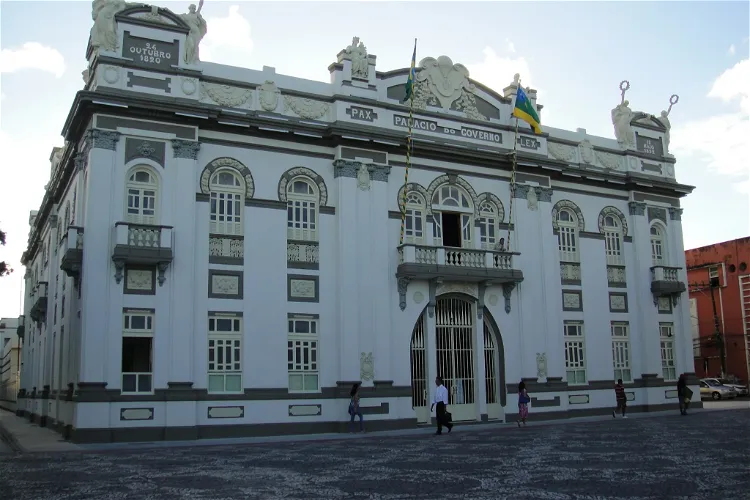
Palace Museum Olímpio Campos
AracajuThe Palácio Olímpio Campos is a significant historical site located in Aracaju, Sergipe. The palace was inaugurated in 1863 and has since been a symbol of the city's rich history and culture. It offers visitors a glimpse into the past and the opportunity to learn about the region's political and cultural heritage.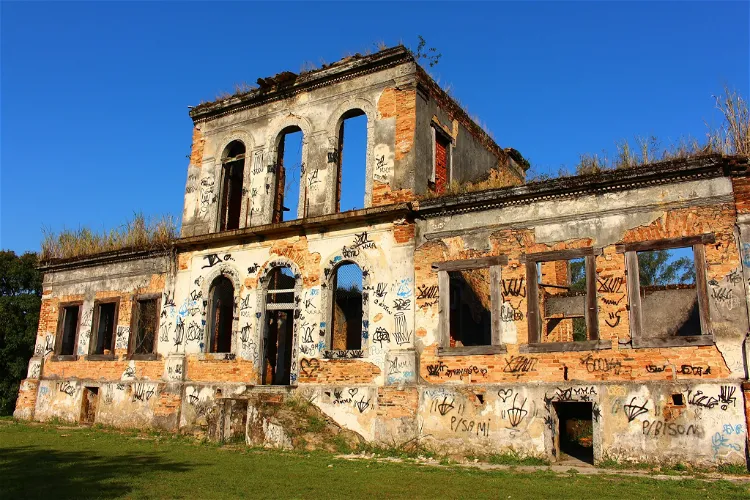
Fazenda São Bernardino
Nova IguaçuFazenda São Bernardino is a historical site located in Iguaçu Velho, within the municipality of Nova Iguaçu, in the state of Rio de Janeiro. The remnants of the old property include the ruins of its headquarters, which were constructed in the 19th century. These ruins provide a glimpse into the past and the rich history of the region.
Museu Histórico Jacinto de Sousa
QuixadáThe Museu Histórico Jacinto de Sousa is situated in the city of Quixadá, in the state of Ceará. This location makes it easily accessible for tourists visiting the region, offering them a chance to delve into the rich history of the area.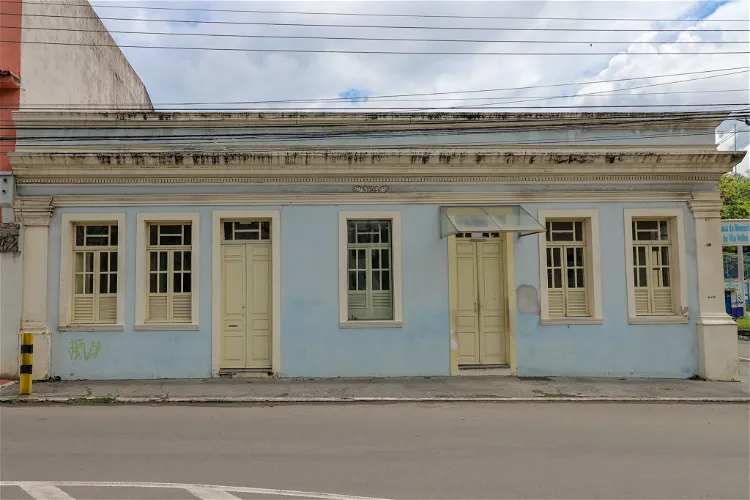
Museu Casa da Memória
Vila VelhaThe Museu Casa da Memória's collection is diverse and rich in historical artifacts. It includes old photos, flags, navigation instruments, statues of important historical figures, newspapers, magazines, and other documents. These items provide insight into the history of the Prainha region and Vila Velha.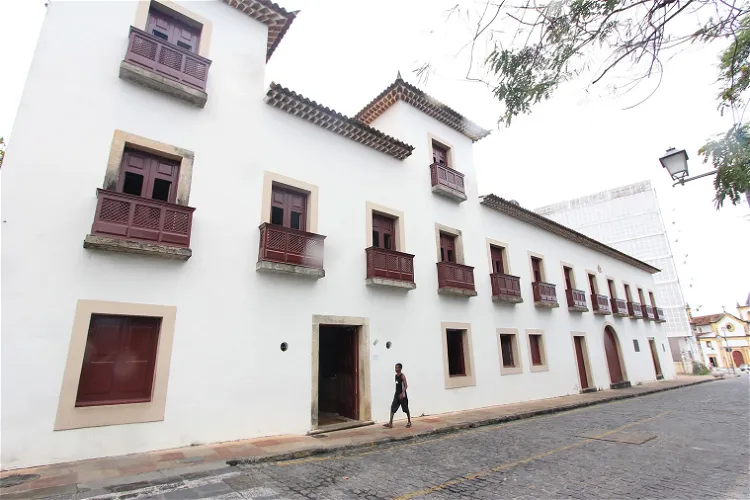
Sacred Art Museum of Pernambuco
OlindaThe Sacred Art Museum of Pernambuco (MASPE) is situated in a historic building in Olinda, a city in the state of Pernambuco, Brazil. This museum is a significant cultural and historical site, offering visitors a glimpse into the rich religious art history of the region.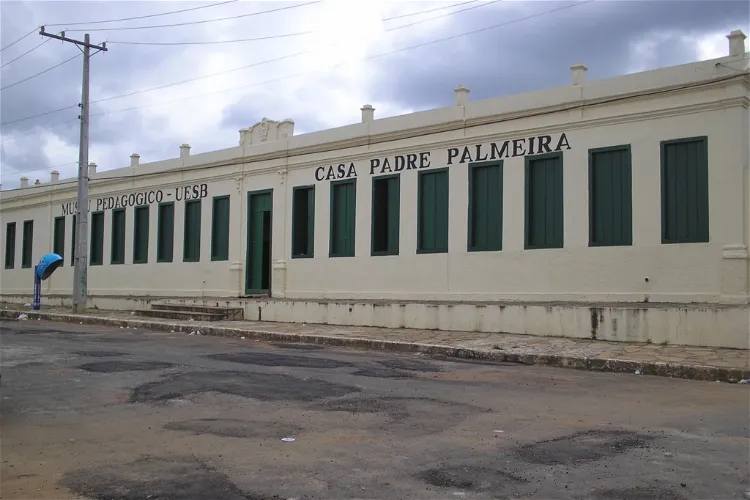
Museu Pedagógico Casa Padre Palmeira
Vitória da ConquistaThe Museu Pedagógico Casa Padre Palmeira is recognized as a Cultural Heritage of the History and Memory of Education in the city of Vitória da Conquista, Bahia. This recognition highlights the museum's significant role in preserving and showcasing the educational history of the region.
Museum of the Missions
São Miguel das MissõesThe Mission Museum, known in Portuguese as Museu das Missões, is a historical site located in São Miguel das Missões, Rio Grande do Sul, Brazil. The museum is situated amidst the ruins of São Miguel das Missões, a Jesuit reduction that includes the Church of São Miguel Arcanjo and other surrounding ruins. This location offers visitors a unique opportunity to explore both the museum and the historical ruins in one visit.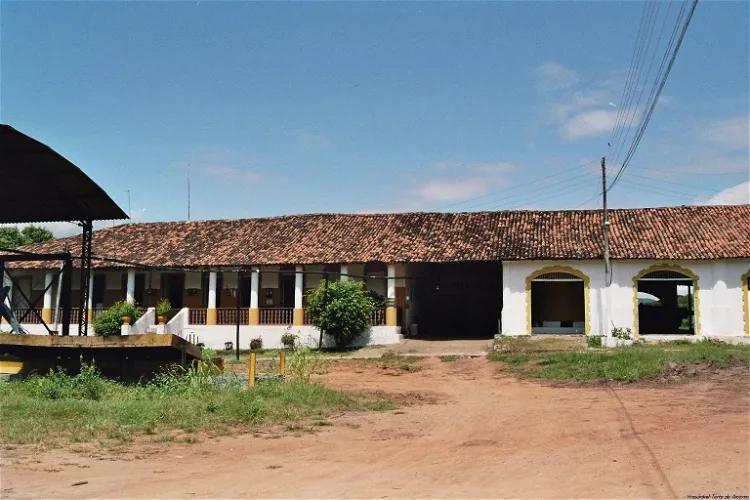
Museu Senzala Negro Liberto
RedençãoThe Museu Senzala Negro Liberto is situated in the Livramento Plantation, within the municipality of Redenção, in the state of Ceará, Brazil. This location is approximately 50 kilometers away from Fortaleza, the state capital. This geographical positioning makes the museum easily accessible for tourists visiting the state capital.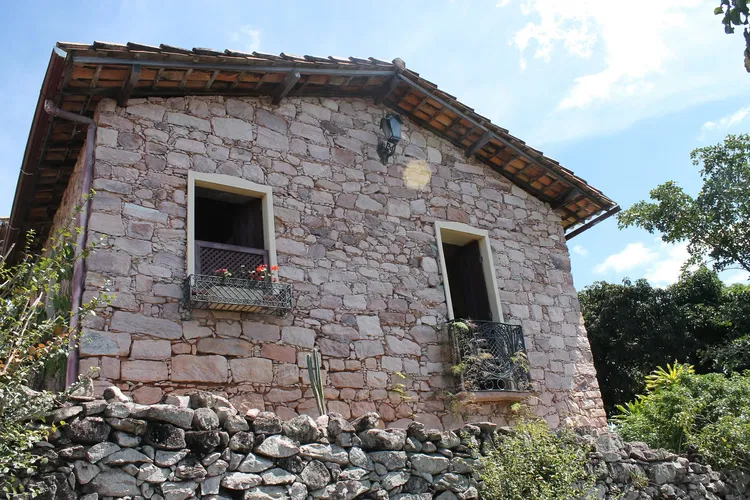
Museu Vivo do Garimpo
MucugêThe Museu Vivo do Garimpo (MVG) is a museum located in the municipality of Mucugê, in the Chapada Diamantina region of the state of Bahia. It was established in 2007 in the area where the Municipal Park of Mucugê is located. This location offers visitors a chance to explore the museum and the park in the same trip, making it a convenient destination for those interested in the history and natural beauty of the region.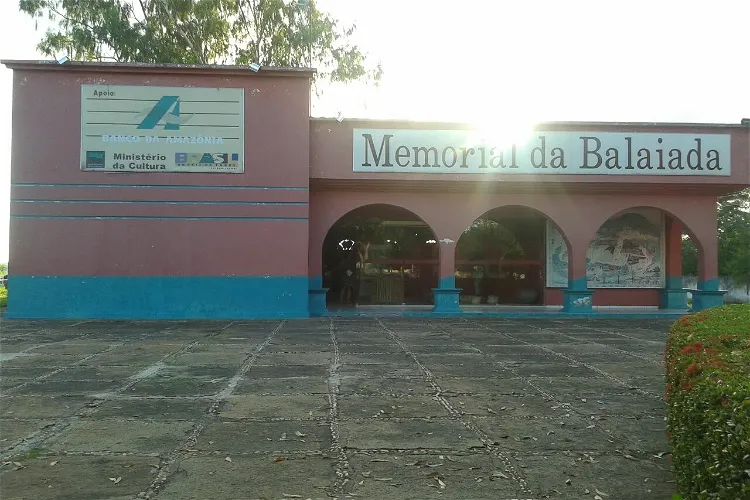
Memorial da Balaiada
CaxiasThe Memorial da Balaiada, located in the city of Caxias, is an educational-cultural center that was inaugurated on June 26, 2004. It is composed of a Museum and a Documentation Center and is situated 365 km from São Luís.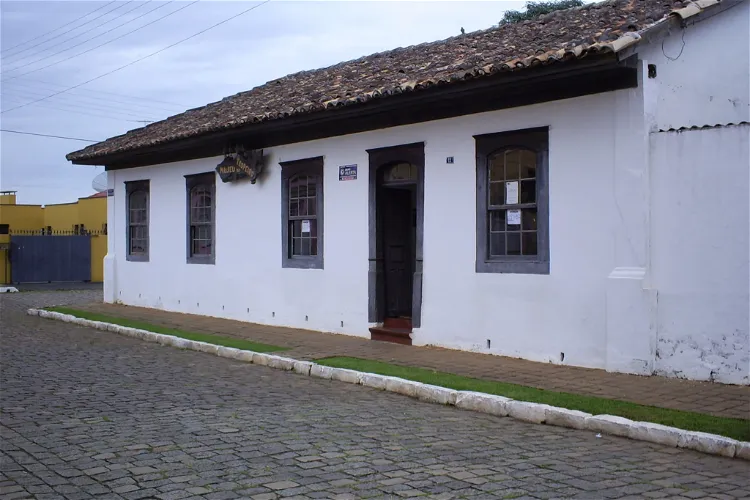
Museu do Tropeiro
ItabiraThe Museu do Tropeiro is situated in Castro, a city nestled in the interior of the state of Paraná. This location provides a unique setting for the museum, offering visitors a chance to explore the history of the region while immersing themselves in the rich cultural heritage of the tropeiro, or muleteer, who traversed the Campos Gerais region in the 18th century.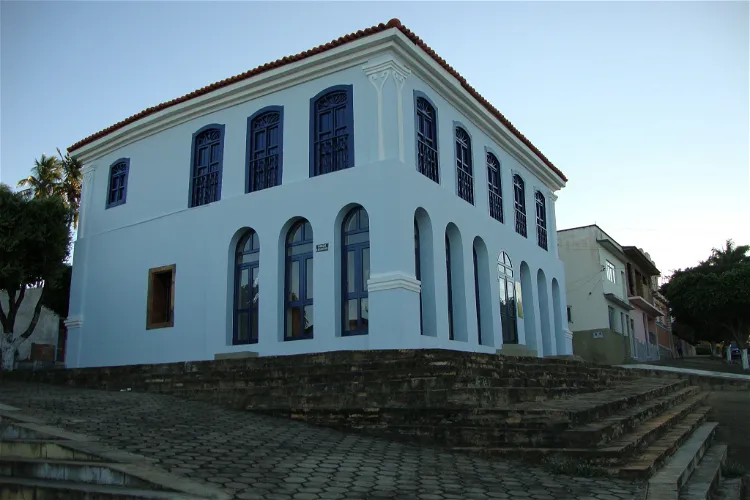
Arquivo Público Municipal de Caetité
CaetitéThe Arquivo Público Municipal de Caetité is conveniently located in the city center, at Praça Dr. Deocleciano Teixeira. It is housed in the old Casa da Câmara e Cadeia de Caetité, a building of historical significance that is listed by the Institute of Artistic and Cultural Heritage of Bahia (IPAC). This location not only makes the APMC easily accessible to visitors but also adds to the historical ambiance of the institution.
Museu Vivo do Padre Cícero
Juazeiro do NorteThe Museu Padre Cícero, also known as Casa Museu Padre Cícero or simply Casarão da Rua São José, is a Brazilian museum located in the city of Juazeiro do Norte, in the state of Ceará. This museum is housed in the last residence of Padre Cícero and is also the place where the priest passed away. It is a significant cultural and historical site that offers a glimpse into the life of this influential figure.
Museu Major Novaes
CruzeiroThe Museu Major Novaes is a public cultural institution situated in Cruzeiro, a city in the state of São Paulo, Brazil. It is maintained by both the state and municipal public authorities, ensuring its preservation and operation. This museum is a significant part of the cultural landscape of Cruzeiro, offering visitors a chance to delve into the rich history and heritage of the region.
Casa da Cultura "Doutor Mauro Mattos Pereira"
FundãoThe Casa da Cultura Doutor Mauro Mattos Pereira, previously known as the Agostini family residence, is a significant cultural heritage site in the Brazilian municipality of Fundão. This building has been recognized by the State Council of Culture of Espírito Santo for its cultural importance. It is a listed building, which means it has been officially recognized and protected due to its historical and architectural significance.
Casarão Galotti
TijucasThe Casarão Gallotti is a historic mansion that was built in 1898. The architect Renhold was commissioned by the Italian immigrant Benjamim Gallotti to construct this mansion for him and his family. This piece of history provides a glimpse into the past and the lives of the Gallotti family.
Museu Arquidiocesano
BrusqueThe Museu Arquidiocesano Dom Joaquim, popularly known as Museu de Azambuja, is situated in Brusque, a city in the state of Santa Catarina. This location is significant as it provides a cultural and historical context to the museum's collection.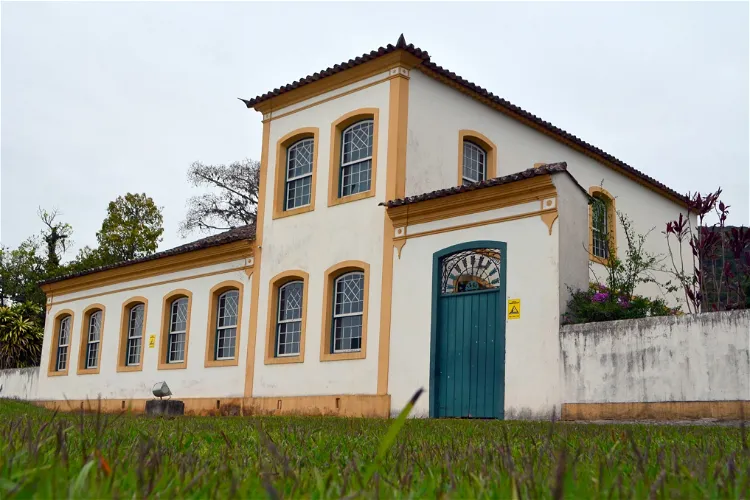
Ethnographic Museum Casa dos Açores
BiguaçuThe Ethnographic Museum Casa dos Açores, also known as the São Miguel Museum, is a Brazilian institution located in São Miguel da Terra Firme, Biguaçu. The museum is primarily dedicated to preserving the Luso-Brazilian memory in the greater Florianópolis region. It is housed in a building dating back to the first half of the 19th century, representing the peak of Azorean-Madeiran culture in São Miguel da Terra Firme.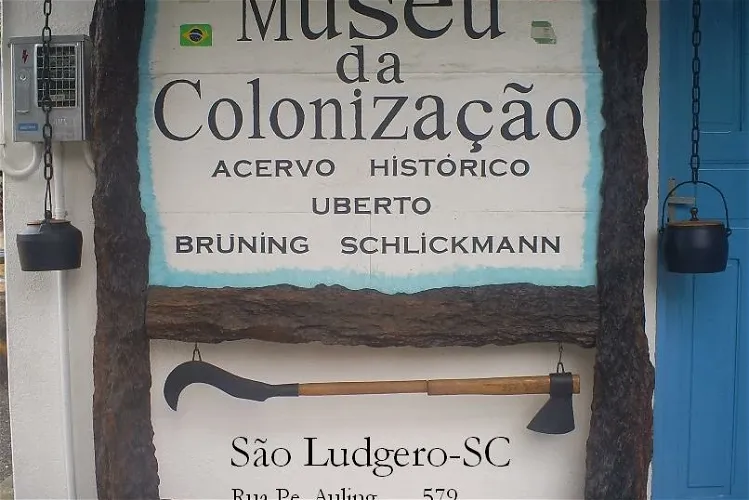
Uberto Museum Brüning Schlickmann
São LudgeroThe Uberto Brüning Schlickmann Colonization Museum, also known as MUBS, is situated in the city of São Ludgero in the state of Santa Catarina, Brazil. This location is significant as it is where the museum's namesake, Uberto Brüning Schlickmann, and his family first settled in the 19th century.
Castelinho do Alto da Bronze
Porto AlegreThe Castelinho do Alto da Bronze is a unique architectural structure located in the historic center of Porto Alegre. It is situated at the intersection of Rua Fernando Machado and Rua General Vasco Alves. This location makes it easily accessible for tourists who are exploring the city's historic center.
Museu da Imagem e do Som de Cuiabá
CuiabáOne of the main objectives of the Museu da Imagem e do Som de Cuiabá is to preserve the memory of life in Cuiabá and Mato Grosso. The museum houses a collection that provides a glimpse into the past, allowing visitors to understand and appreciate the history and culture of these regions.- 198
Museu Tropeiro Velho
ChapecóThe Museu Tropeiro Velho is a Brazilian museum situated in Linha Boa Vista. This museum is owned by the Fonseca family and is located in the municipality of Chapecó, in the state of Santa Catarina. It offers a unique insight into the local culture and history. - 199
Museu Municipal de Uberlândia
UberlândiaThe Museu Municipal de Uberlândia is situated in the historic building of the Palácio dos Leões, in the Clarimundo Carneiro Square, in the heart of the city. This location makes it easily accessible for tourists and provides a glimpse into the city's rich history. 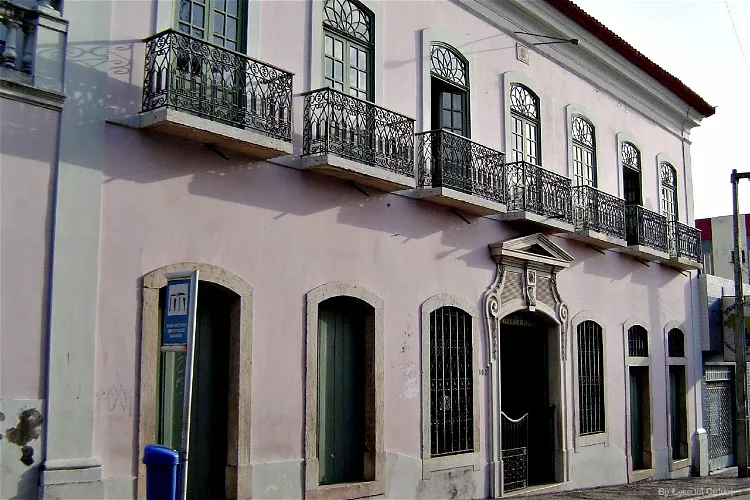
Museu Histórico e Artístico do Maranhão
São LuísThe Museu Histórico e Artístico do Maranhão (MHAM) is a public institution situated in São Luís, within the Solar Gomes de Souza. The museum's mission is to safeguard, promote, and disseminate the cultural heritage of the state, making it a significant location for those interested in understanding the region's history and culture.